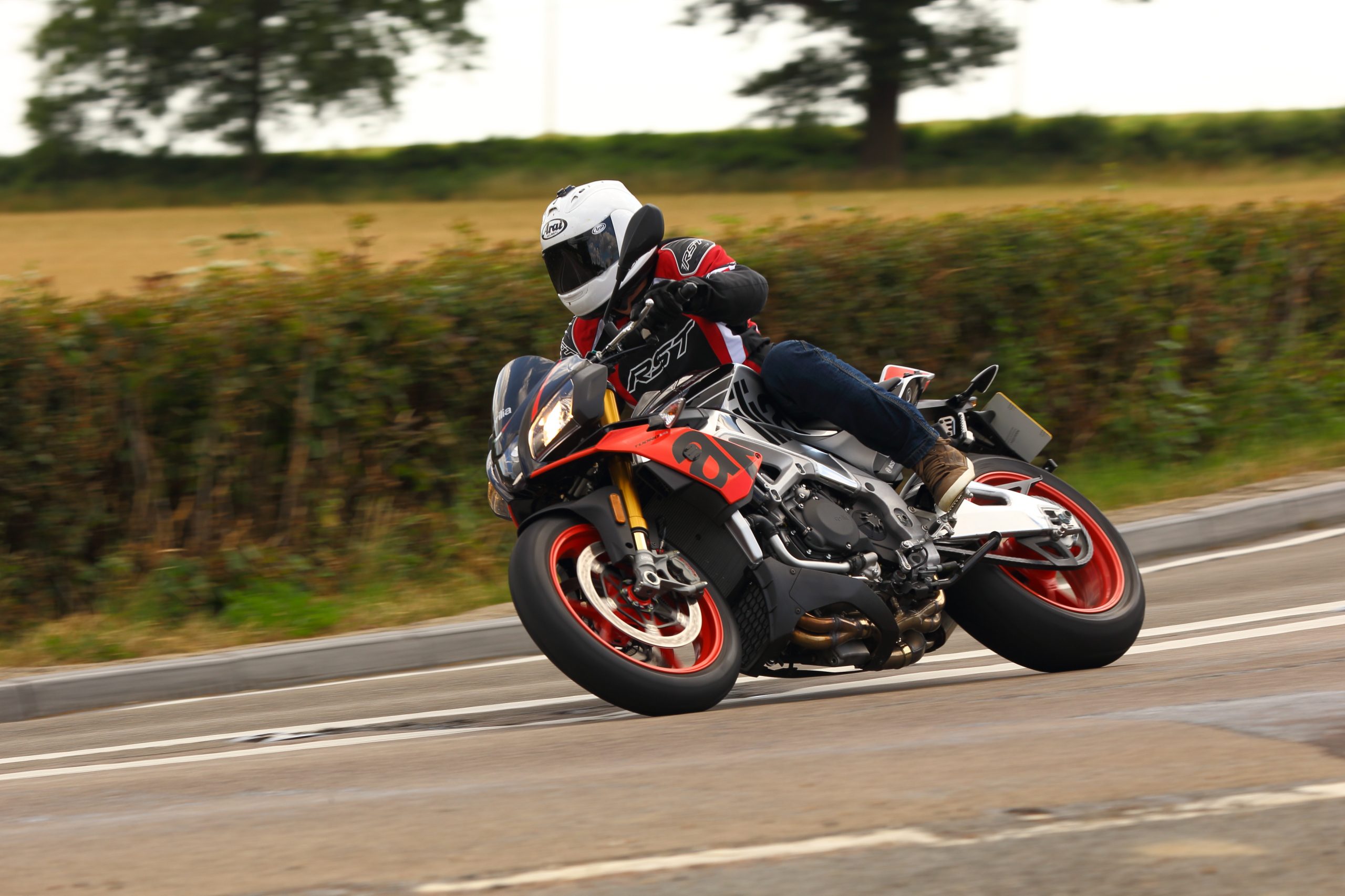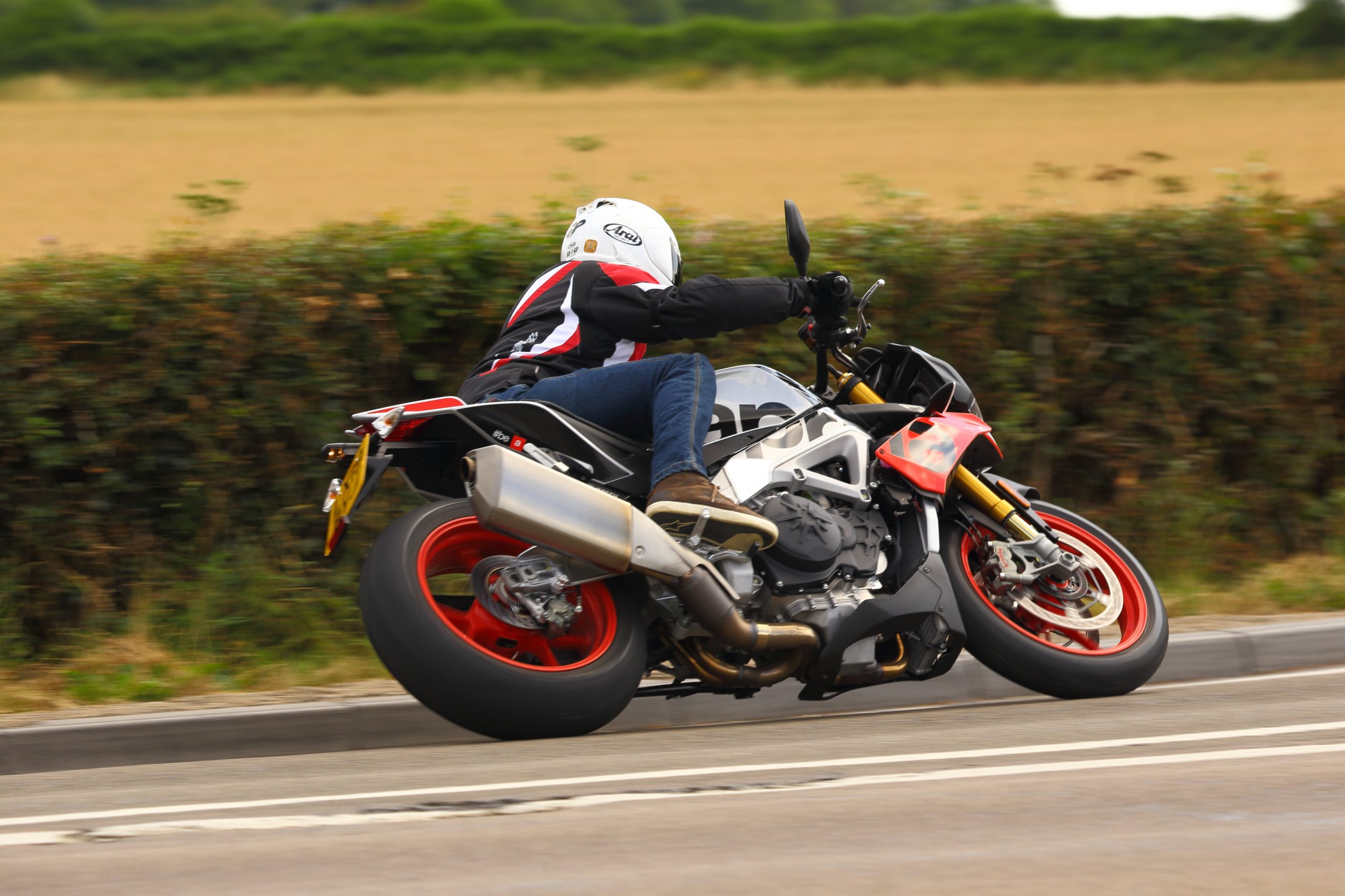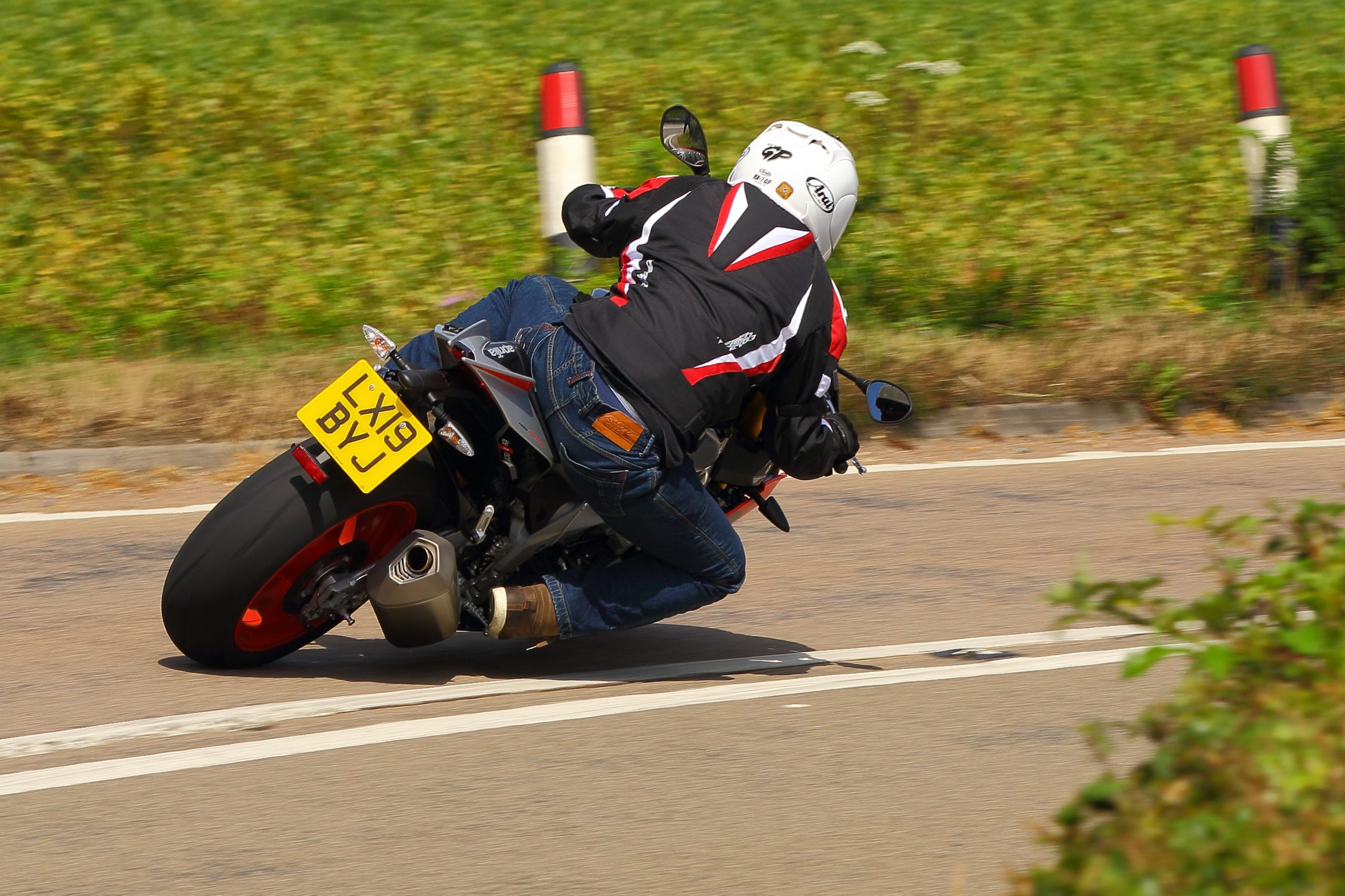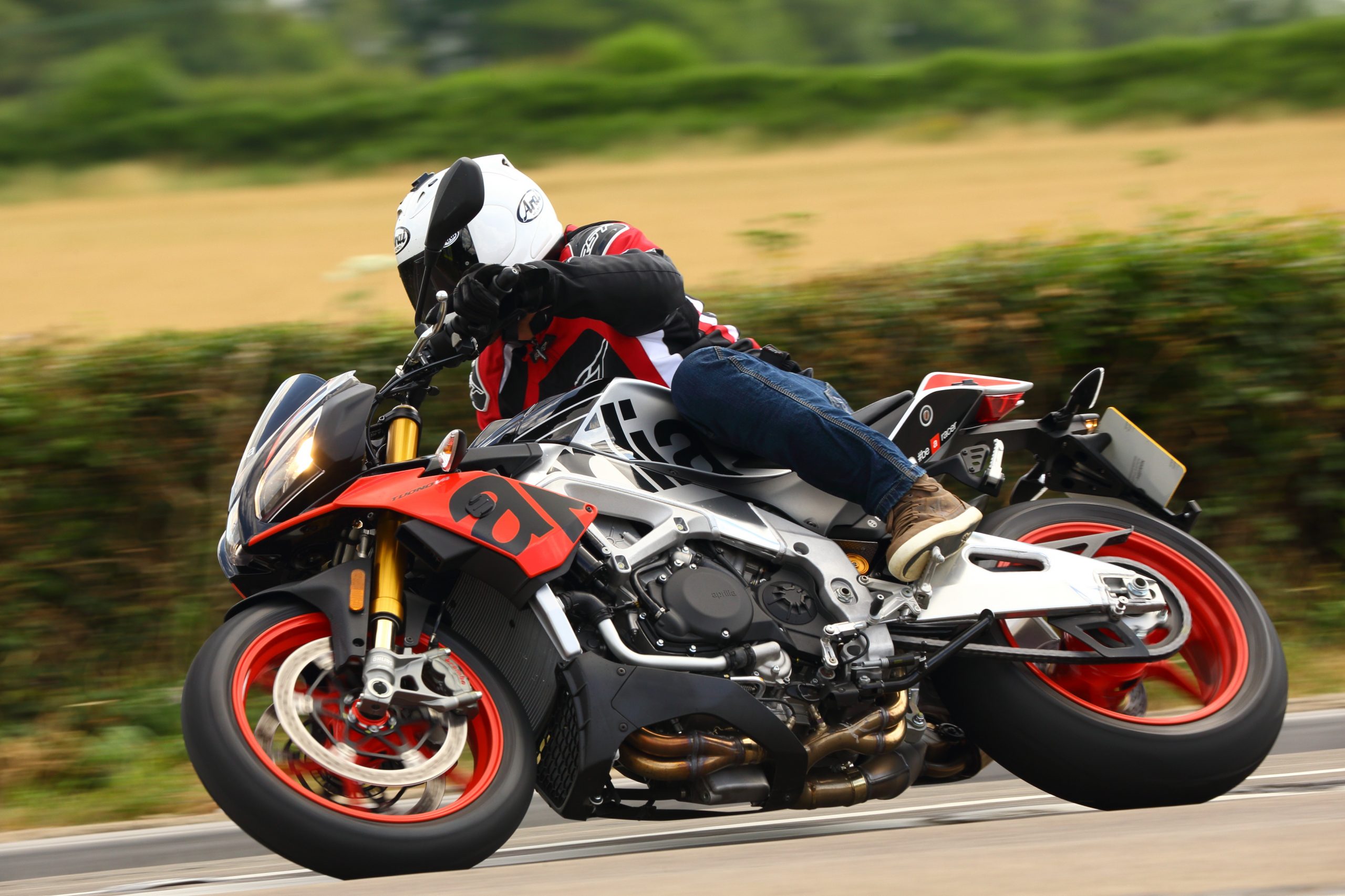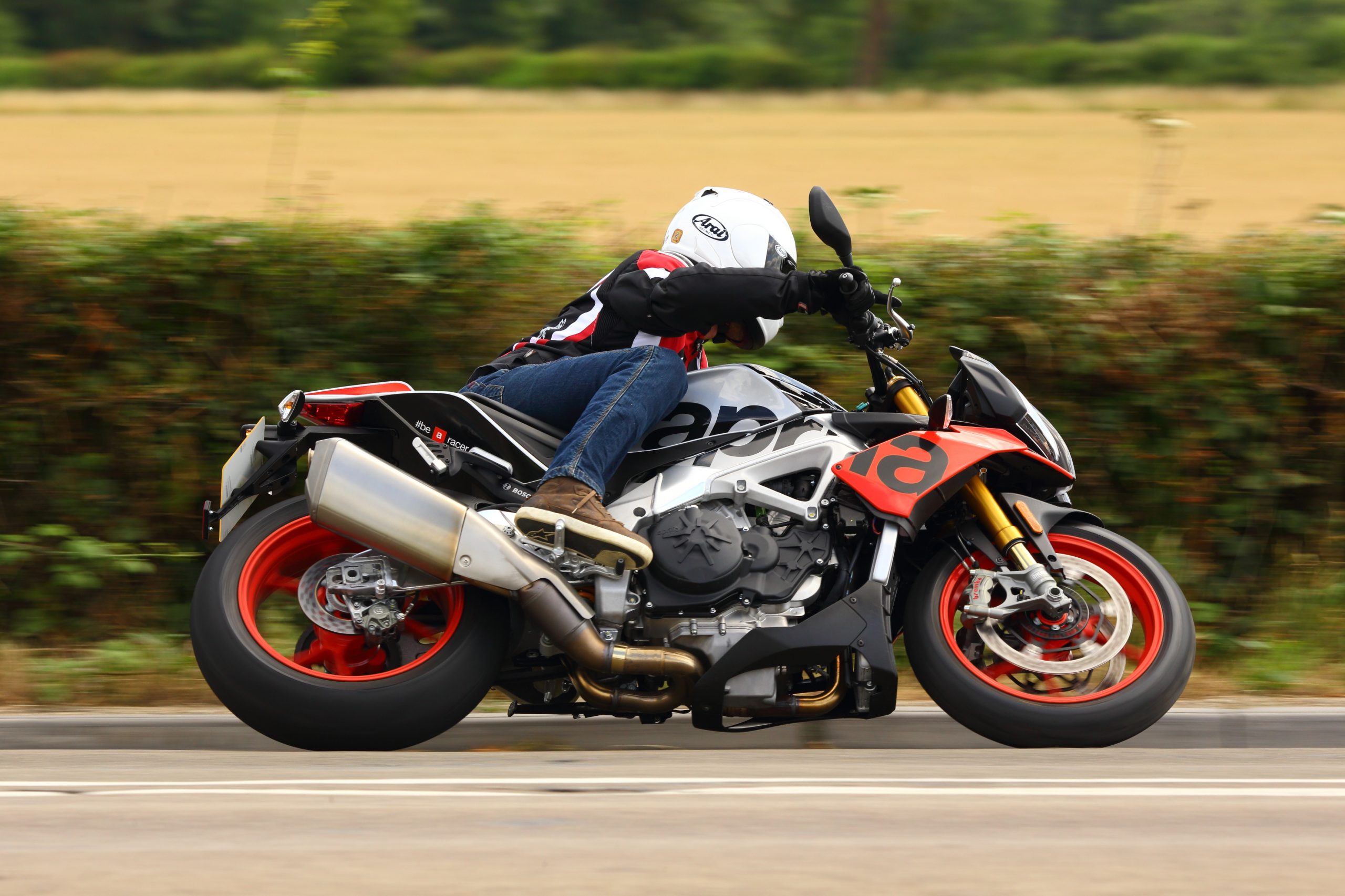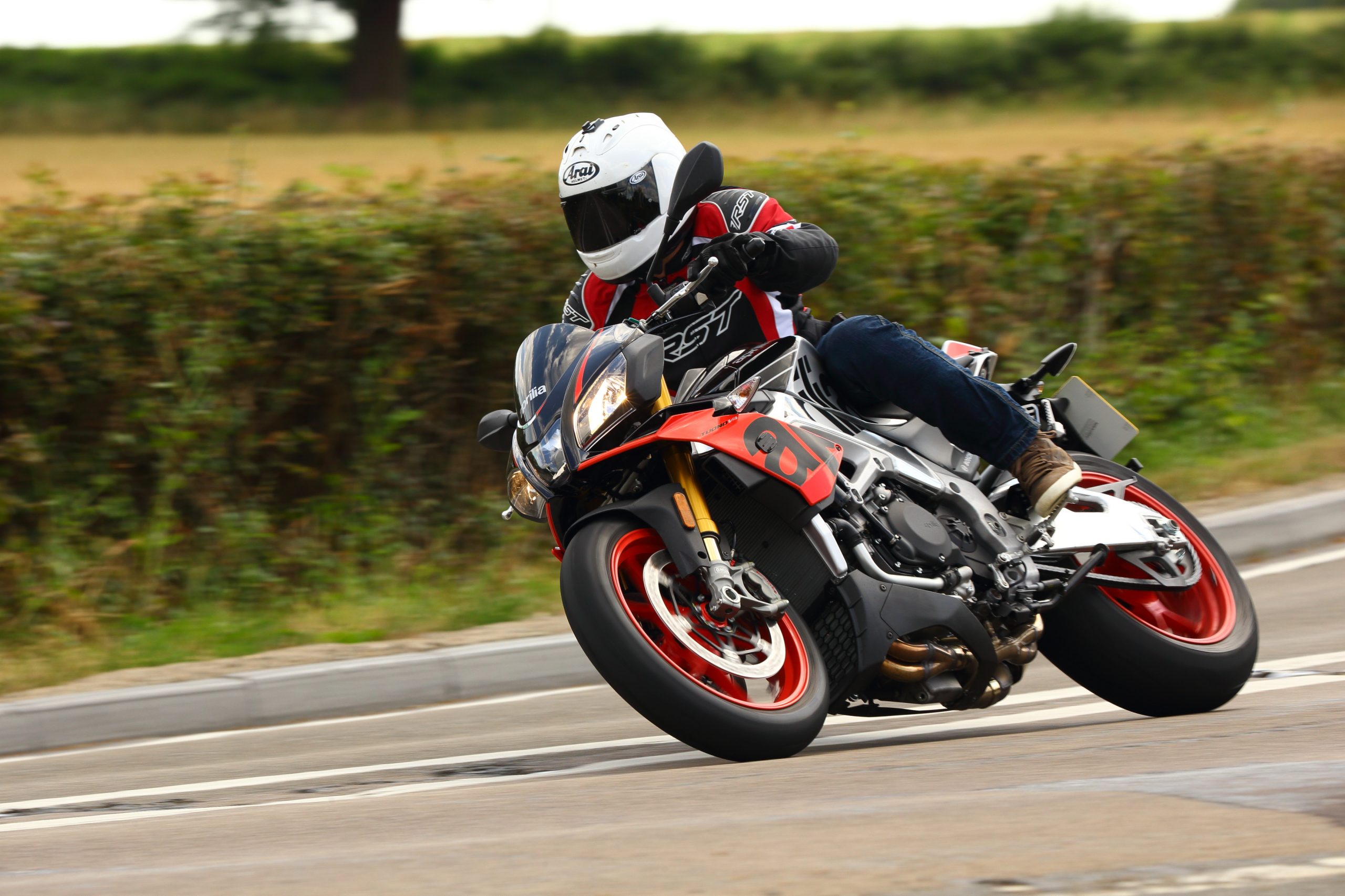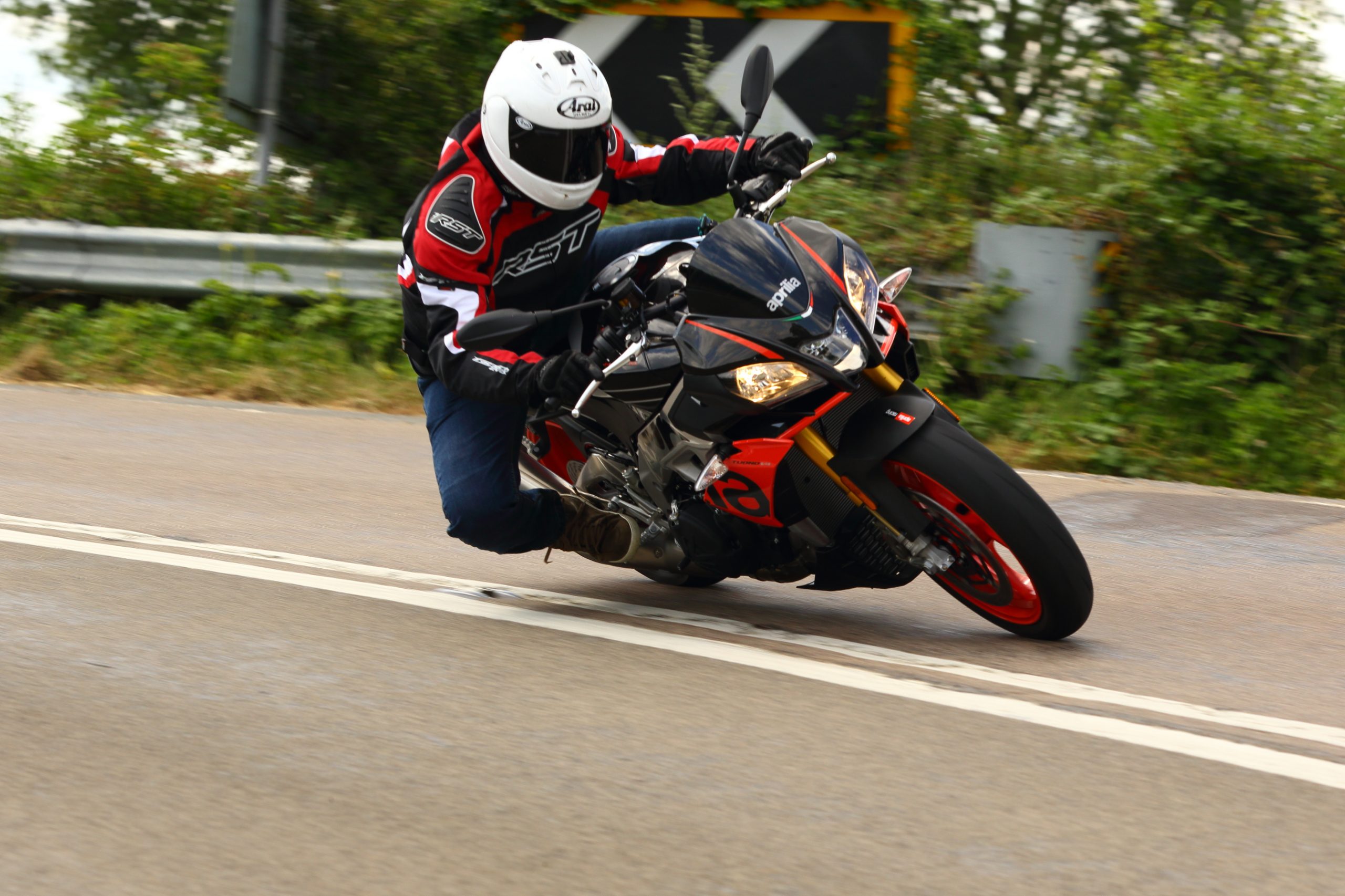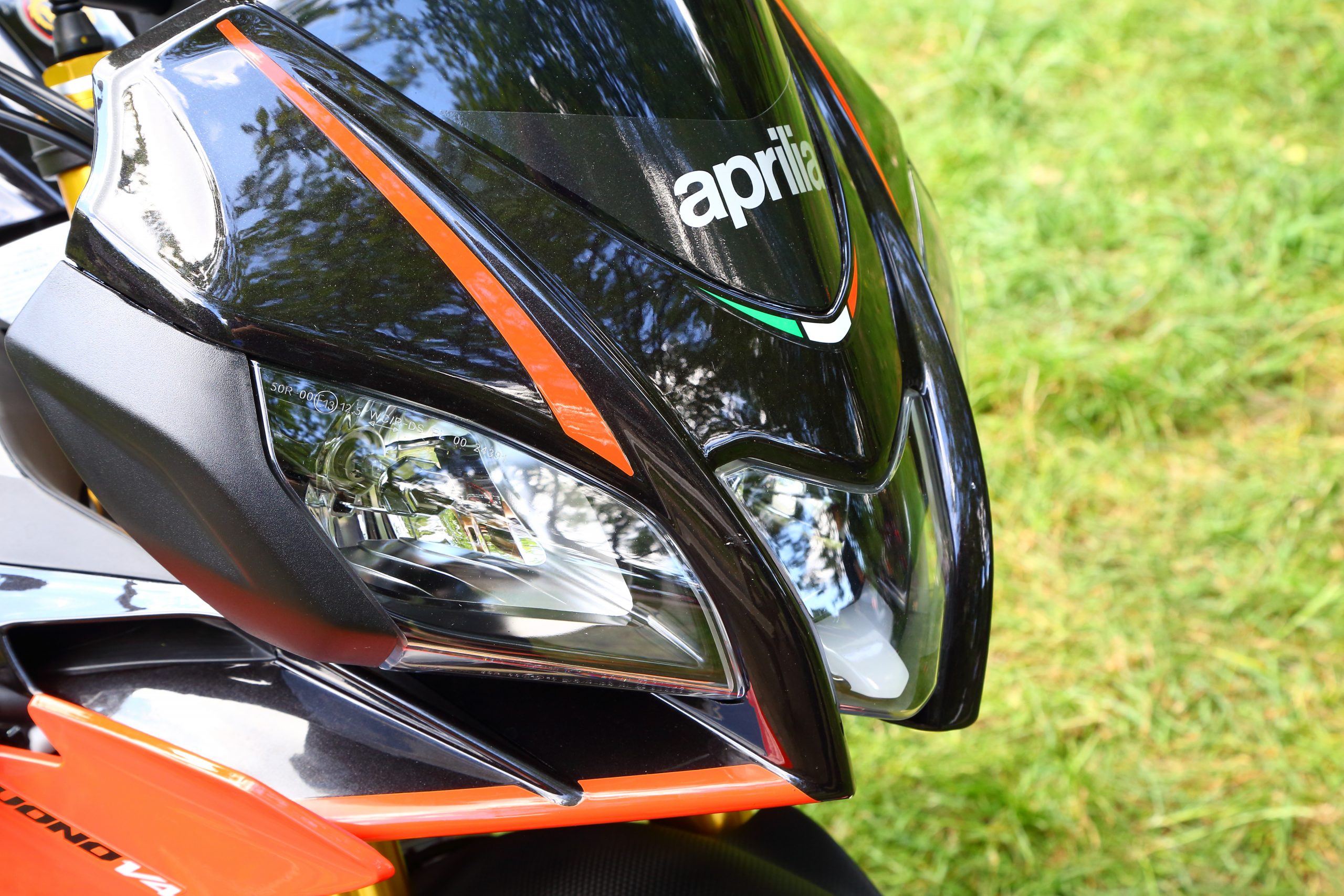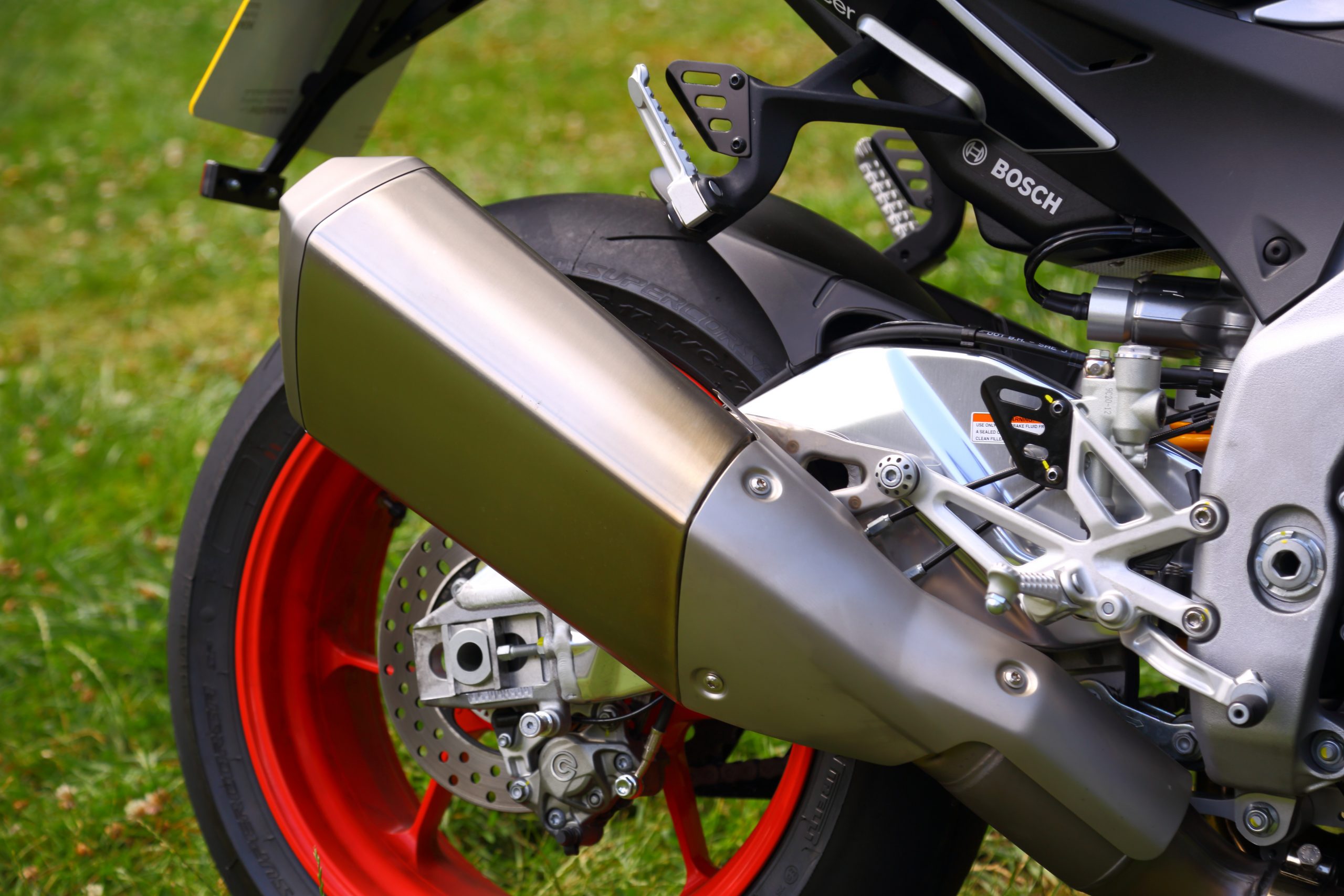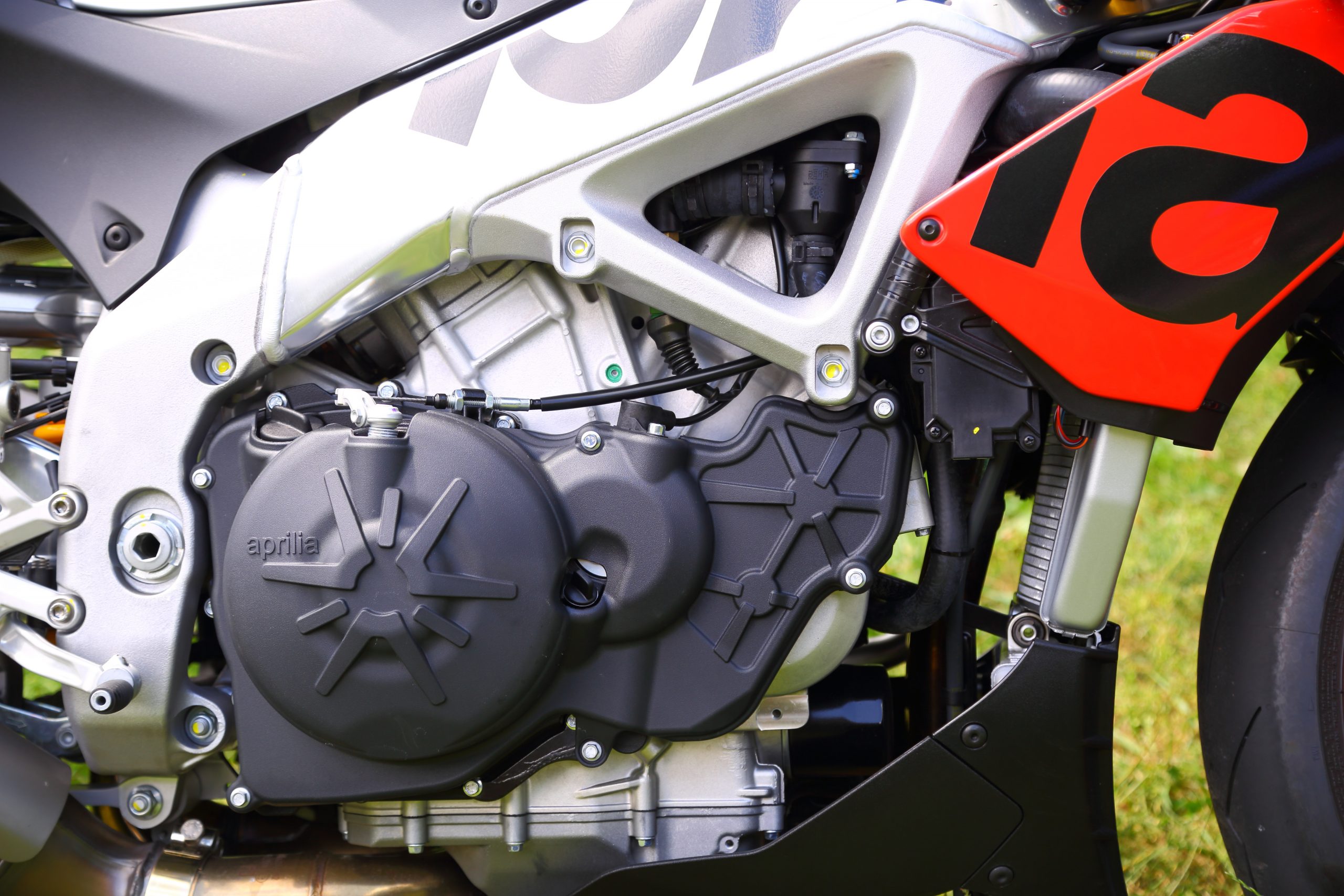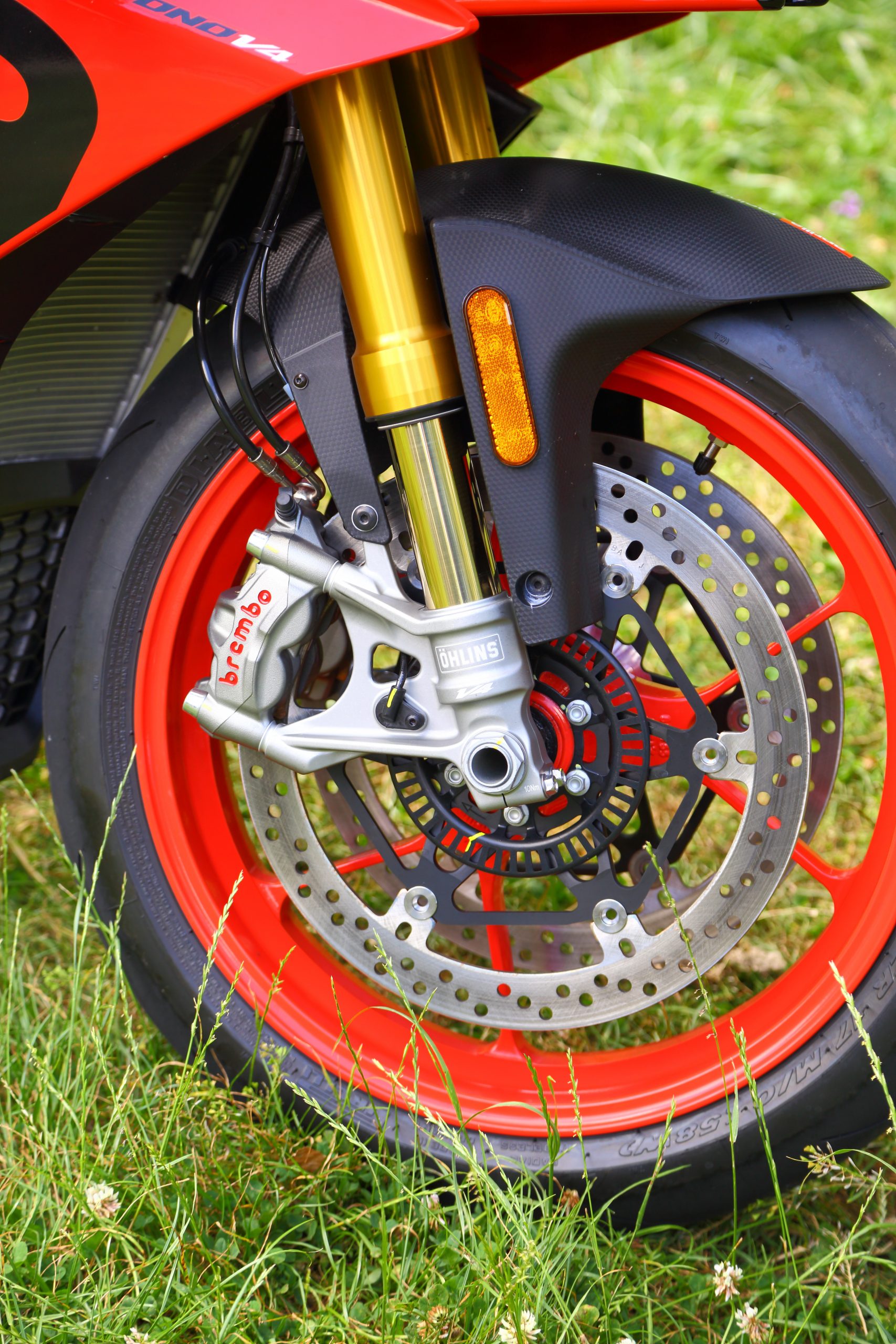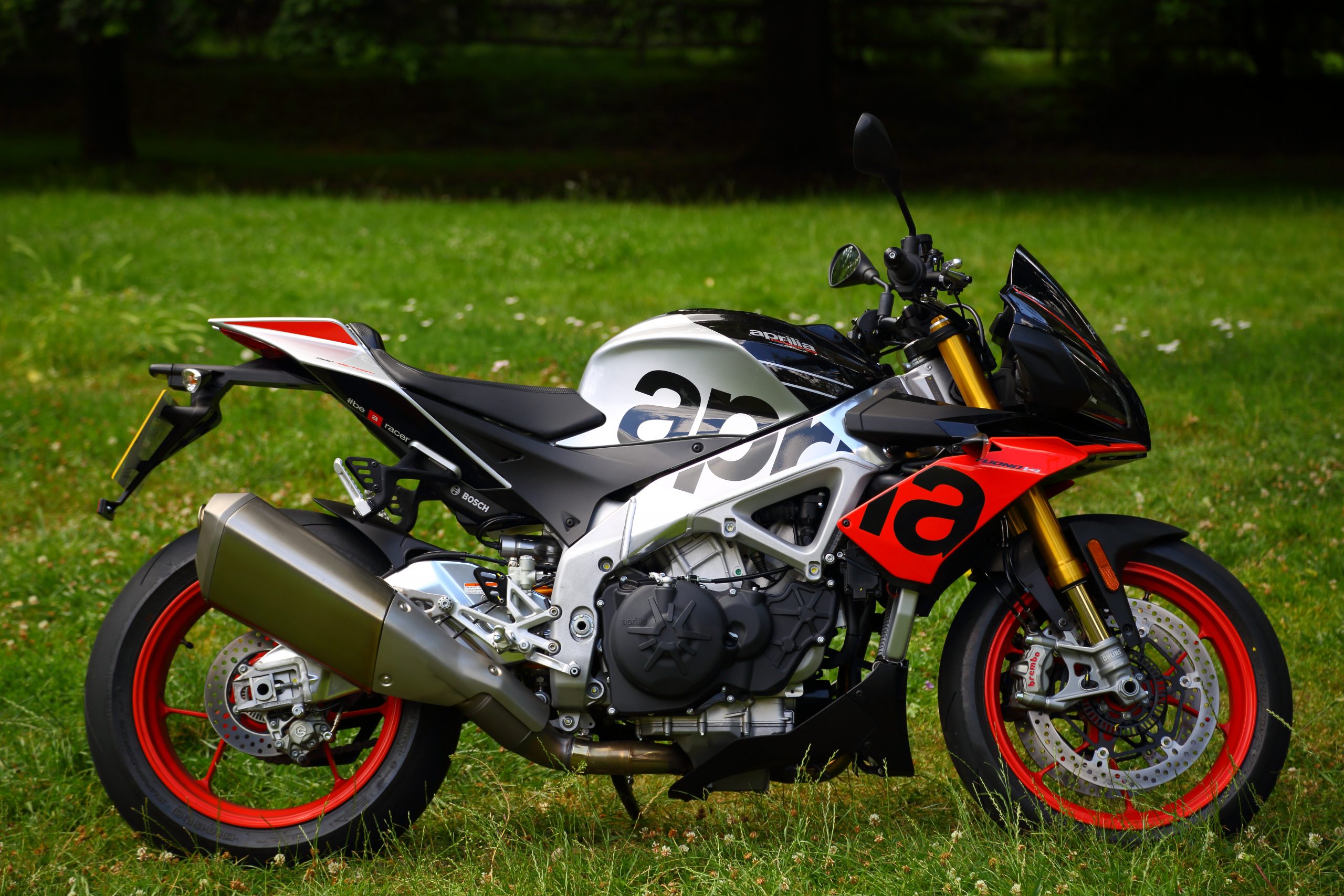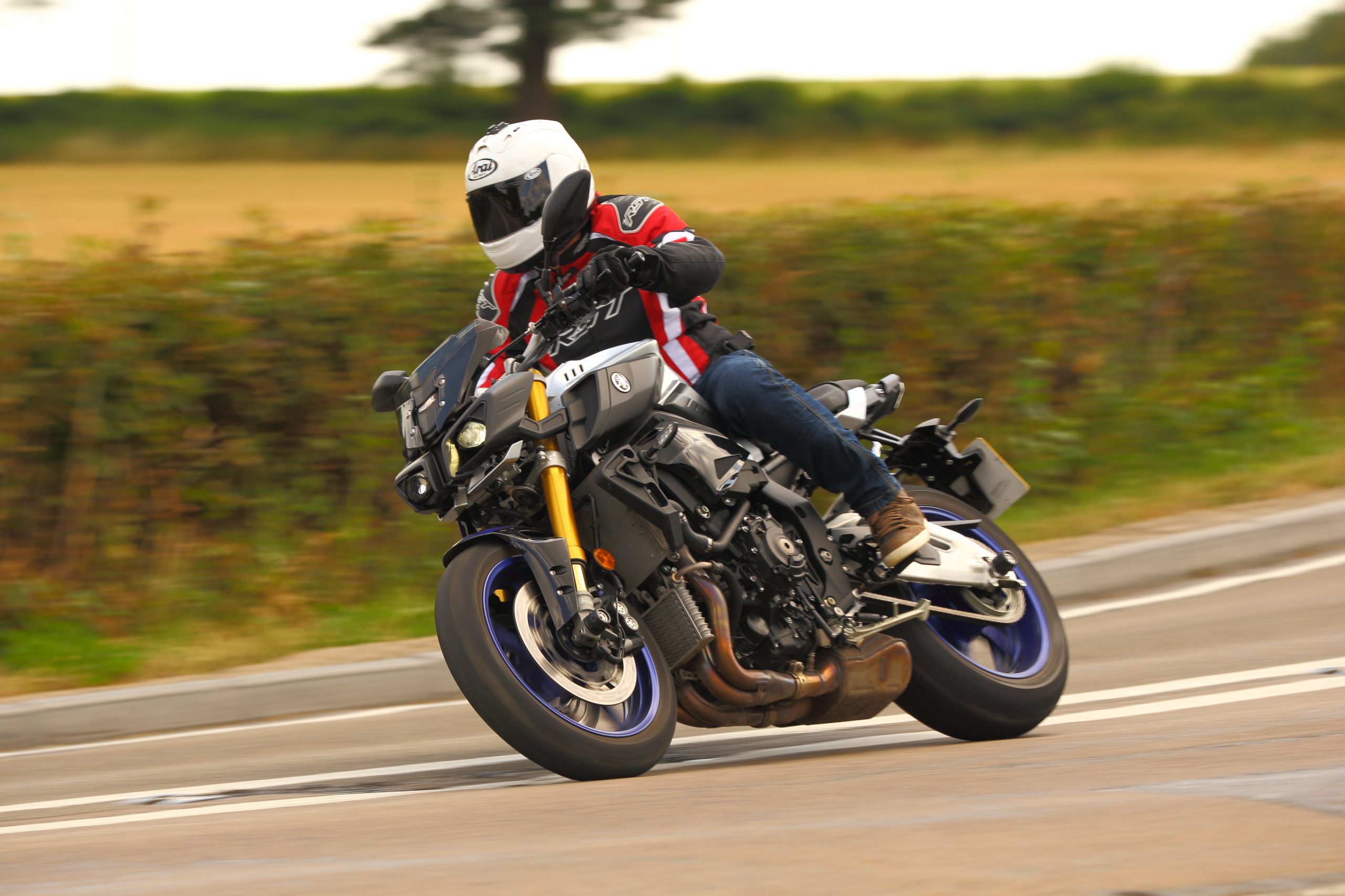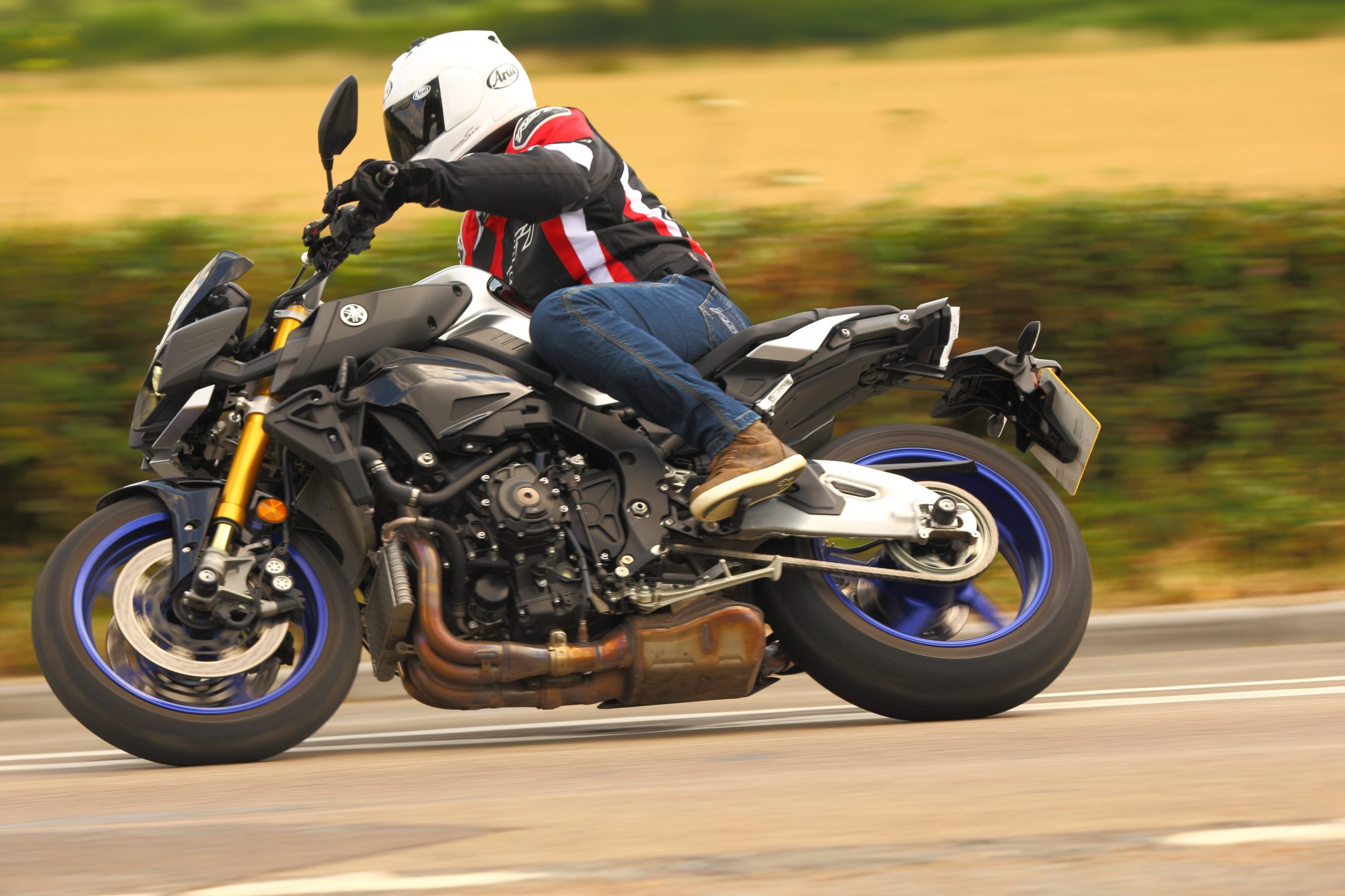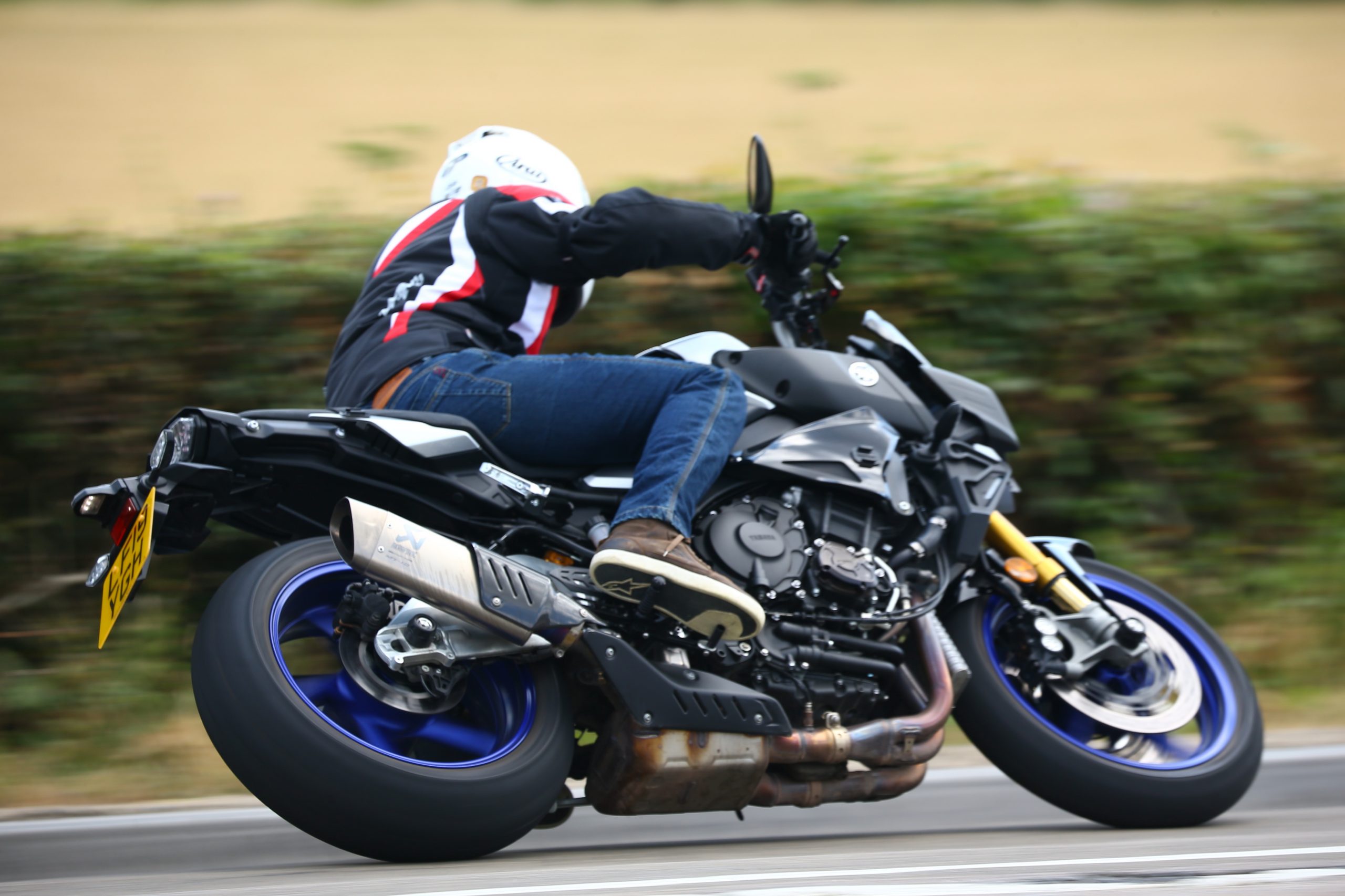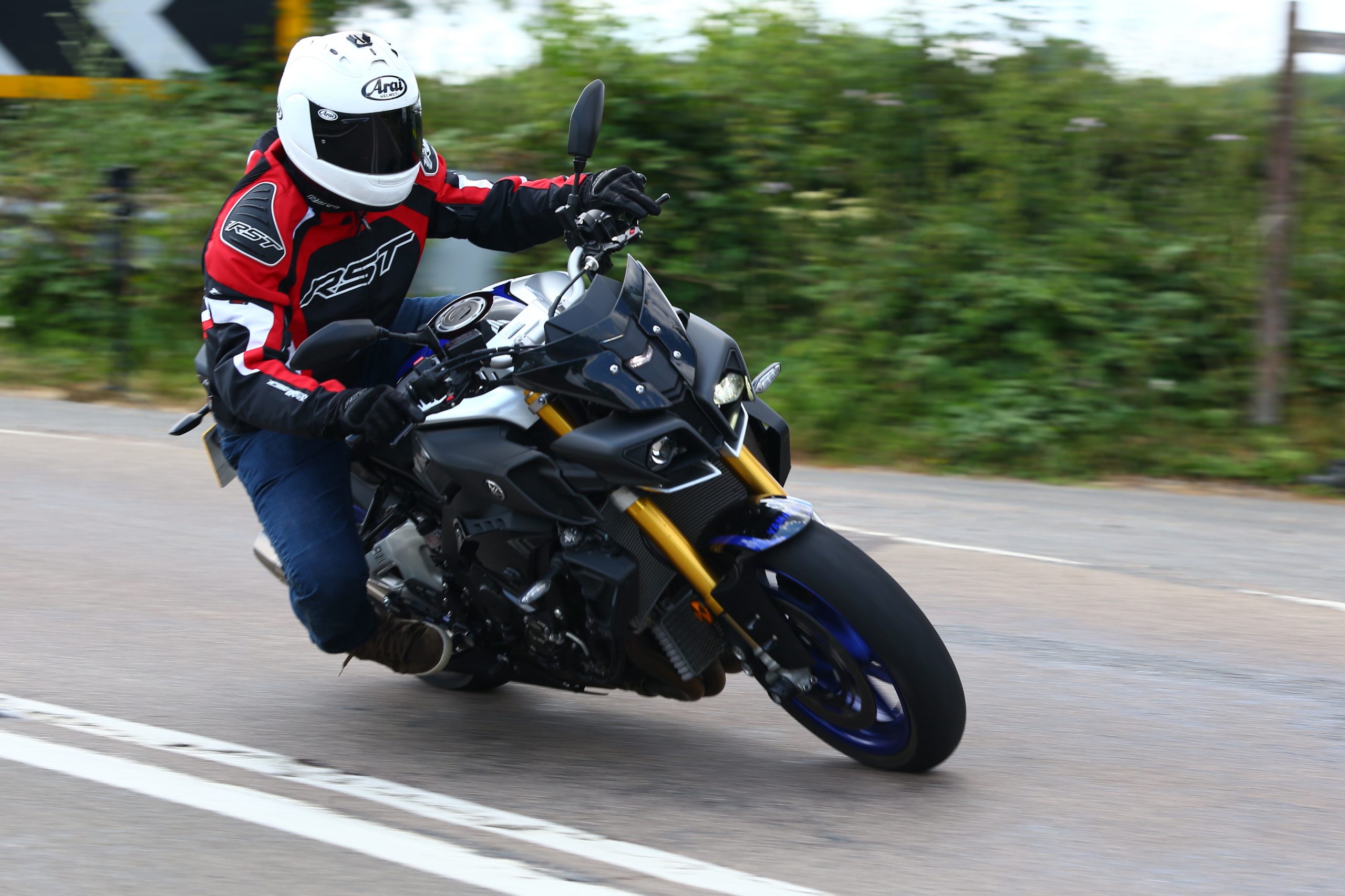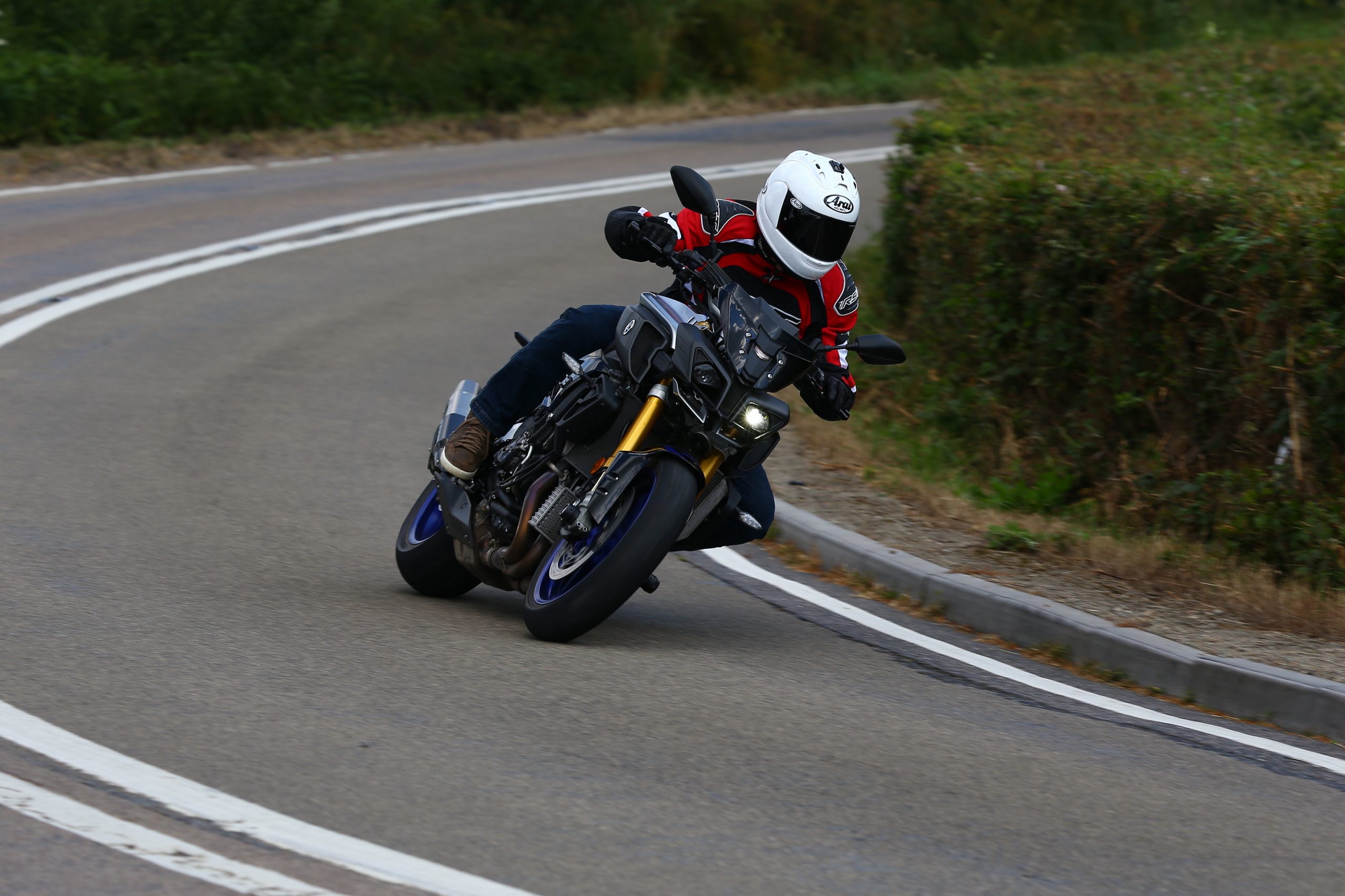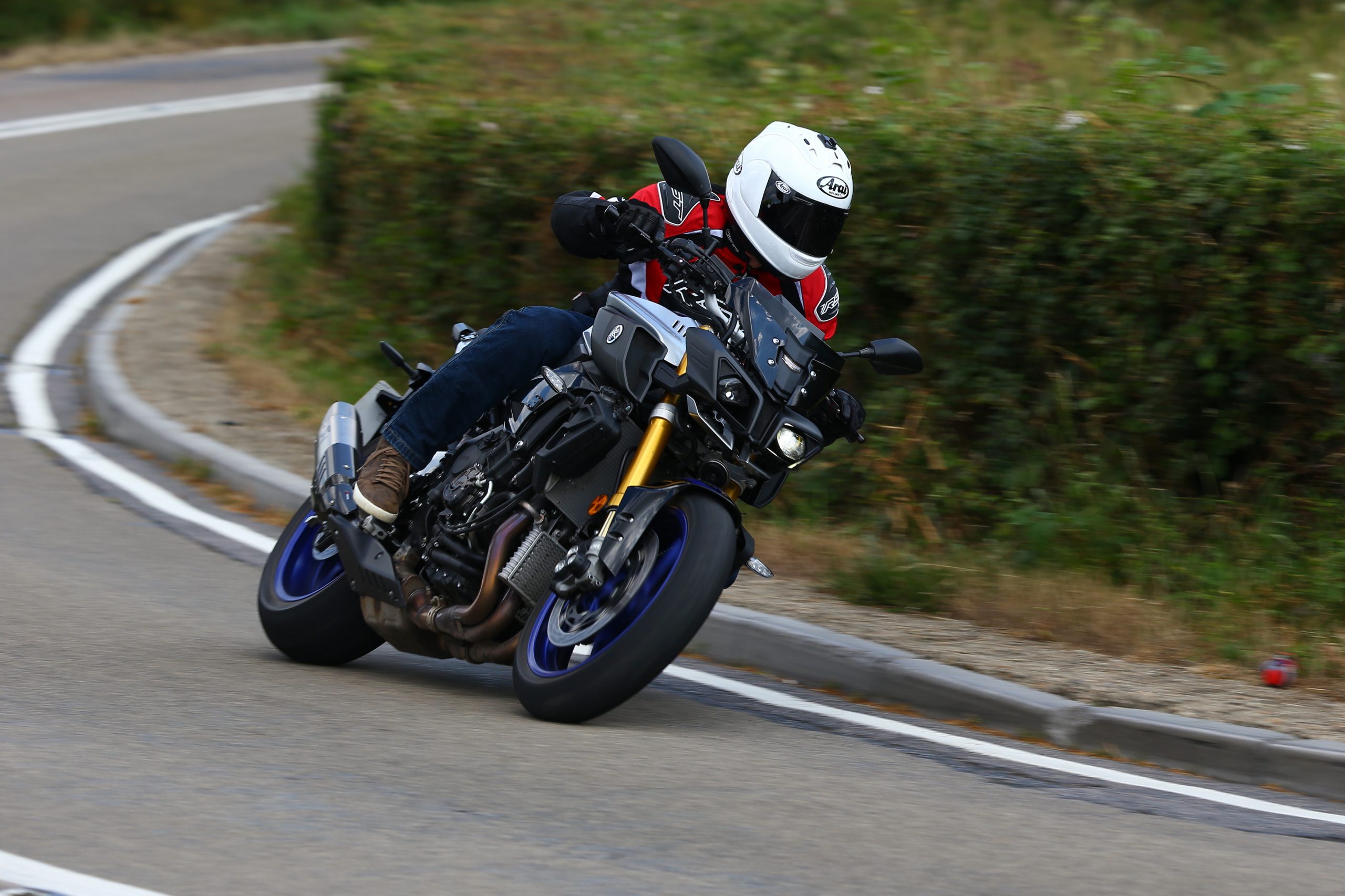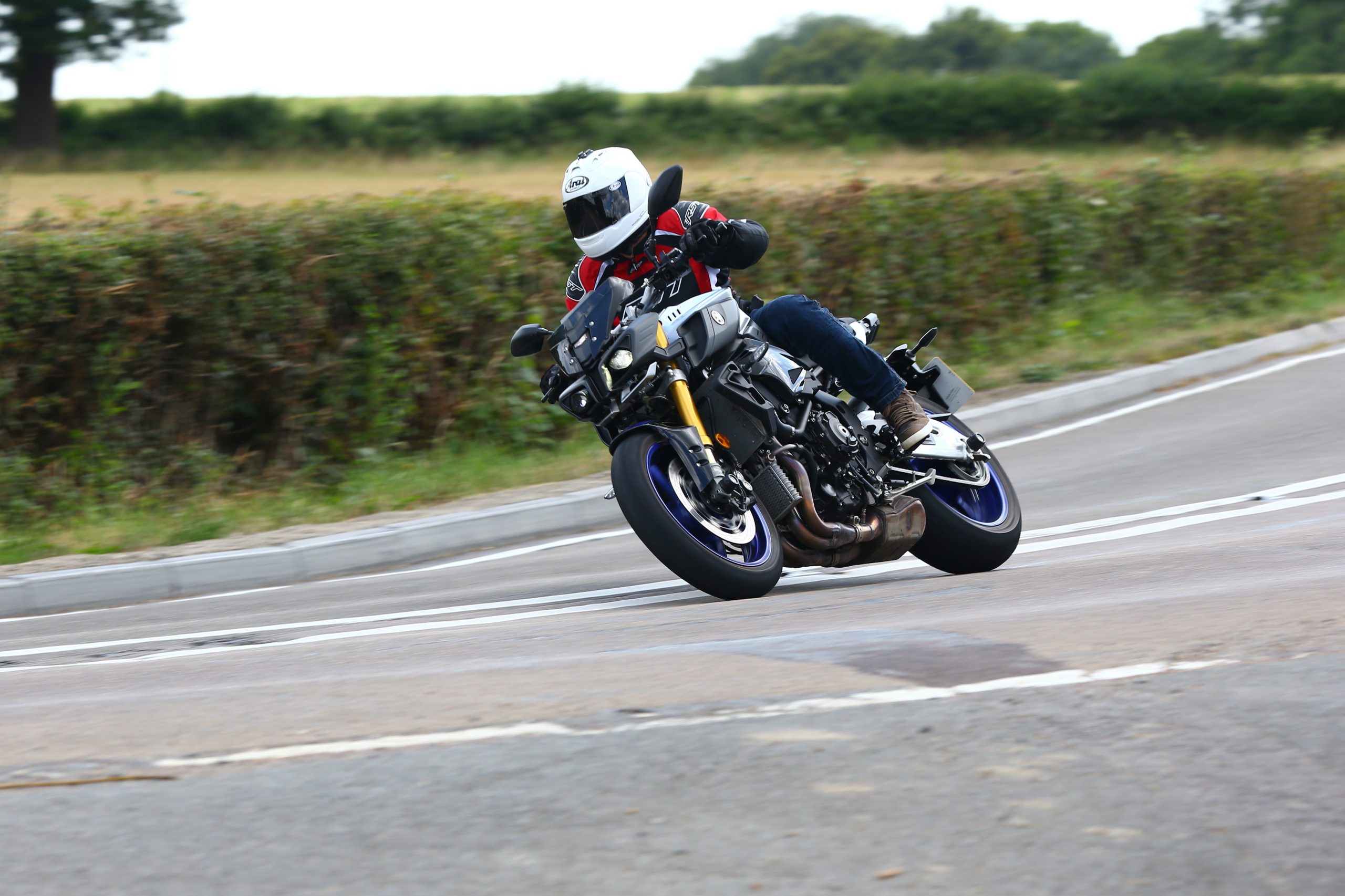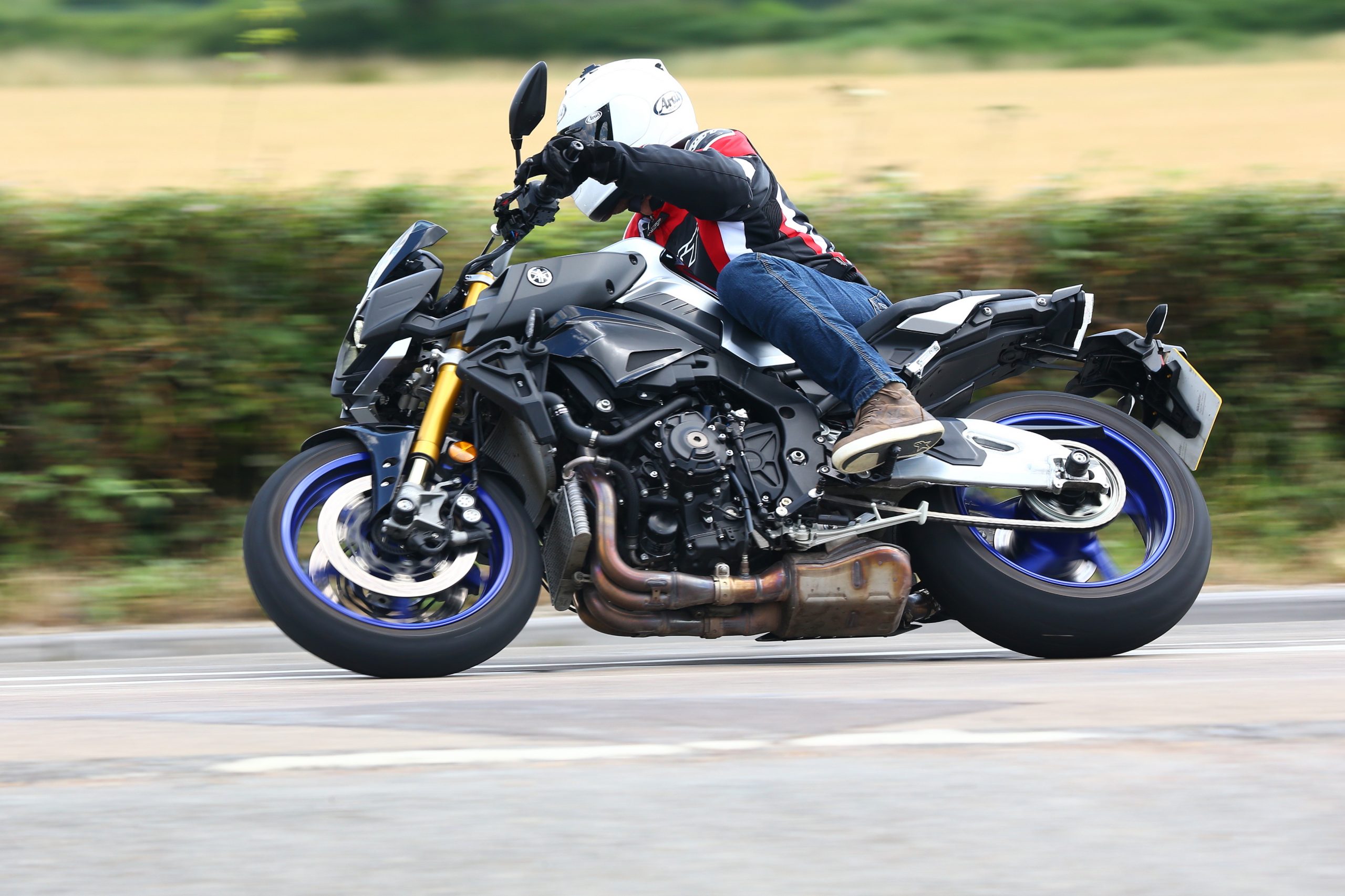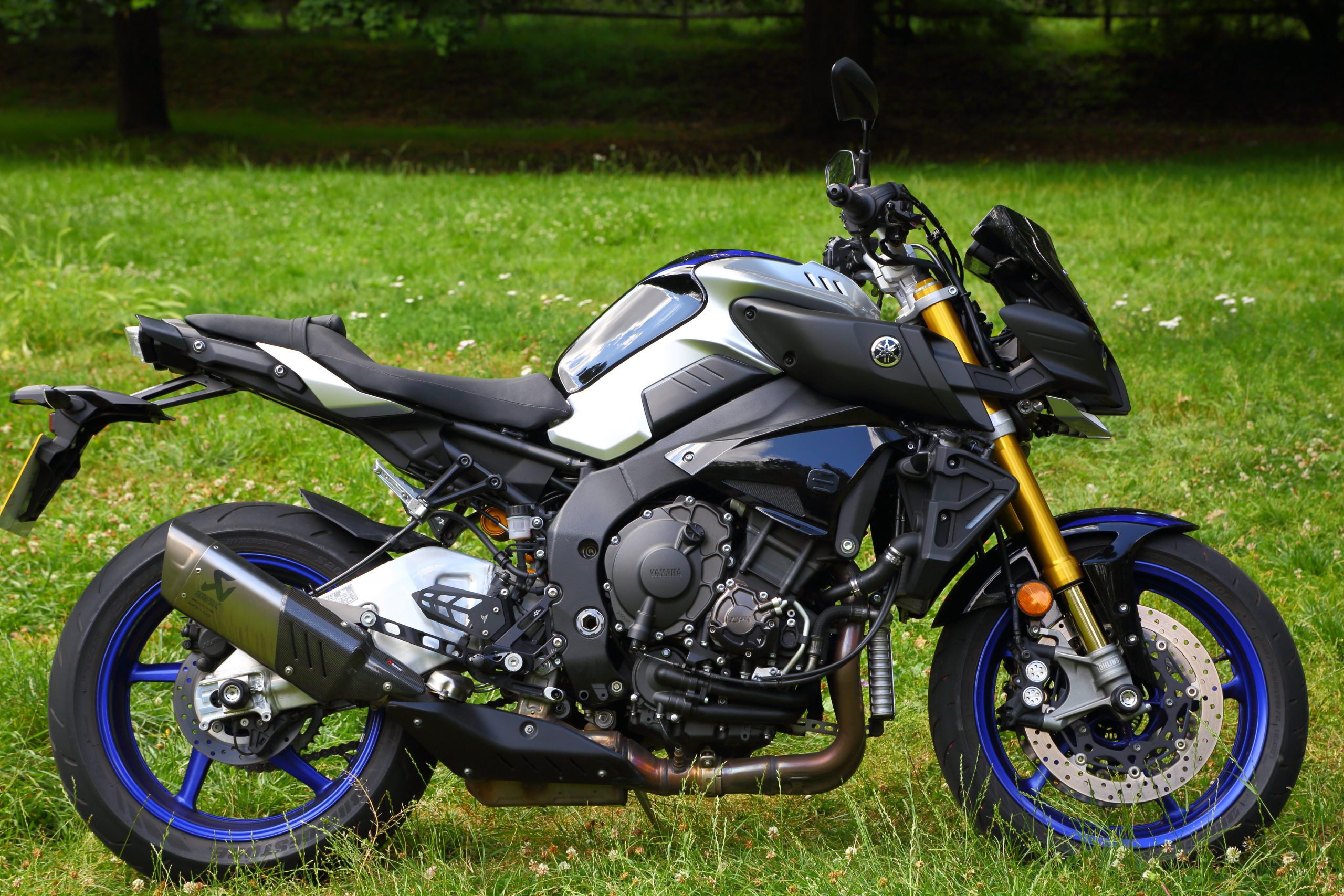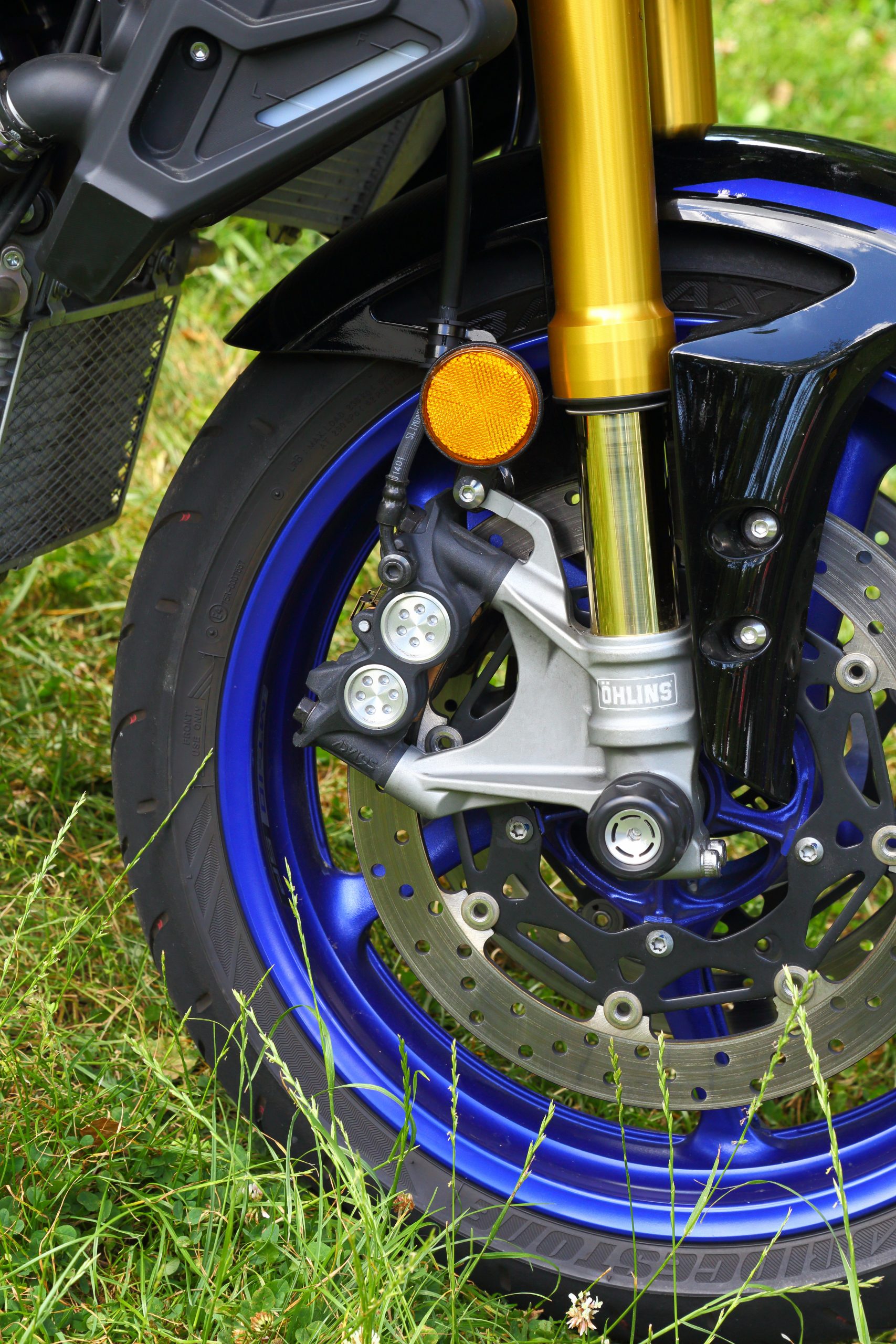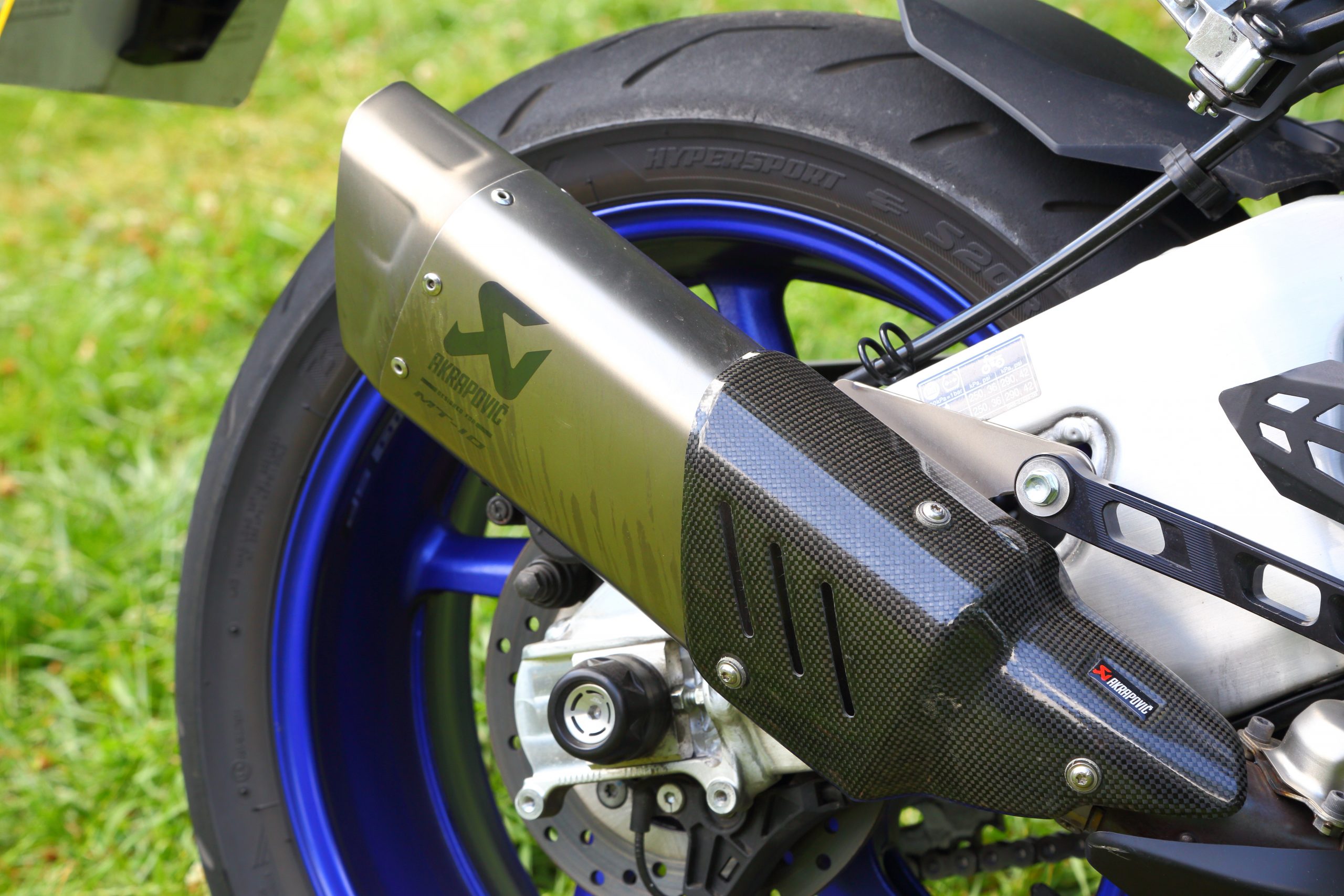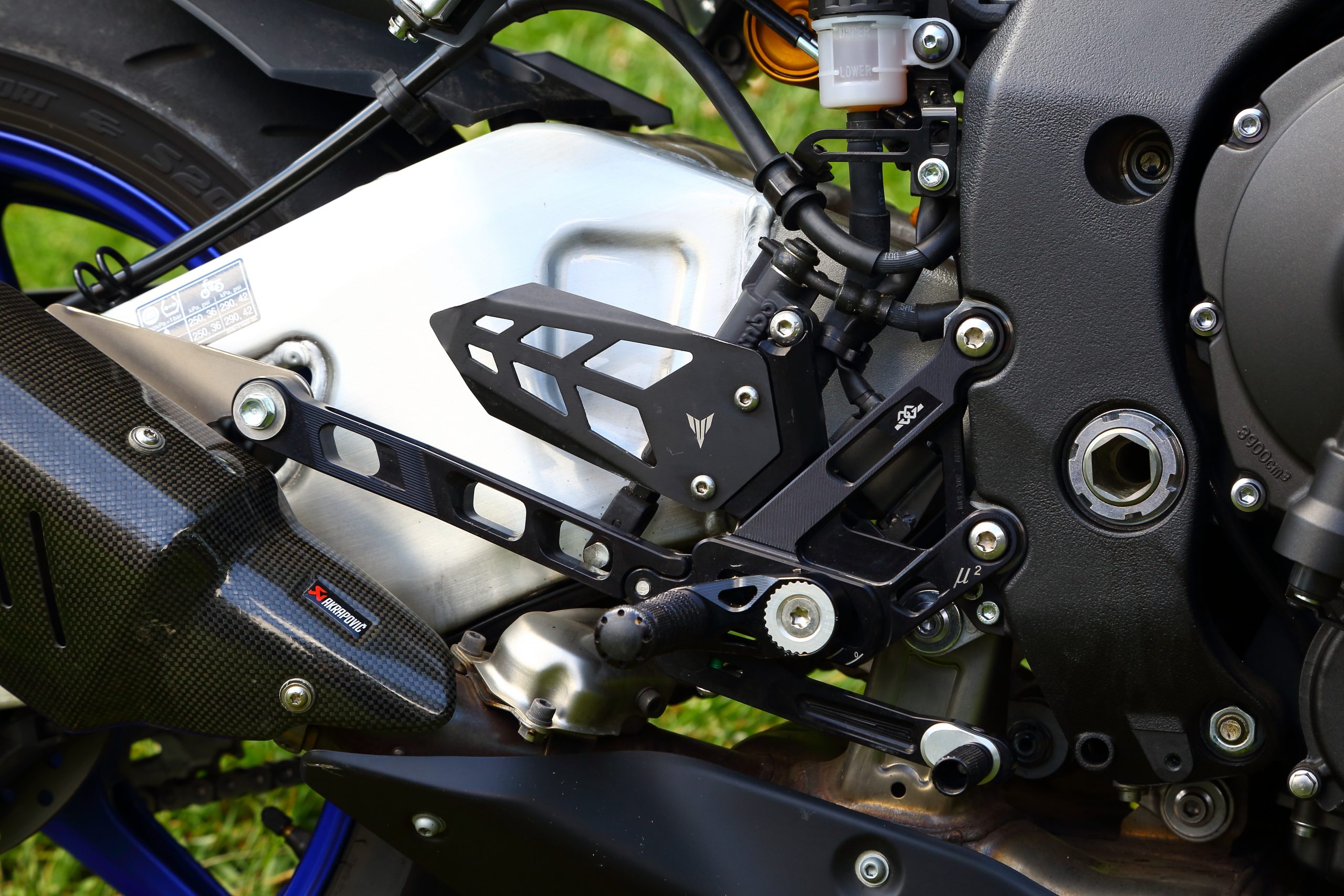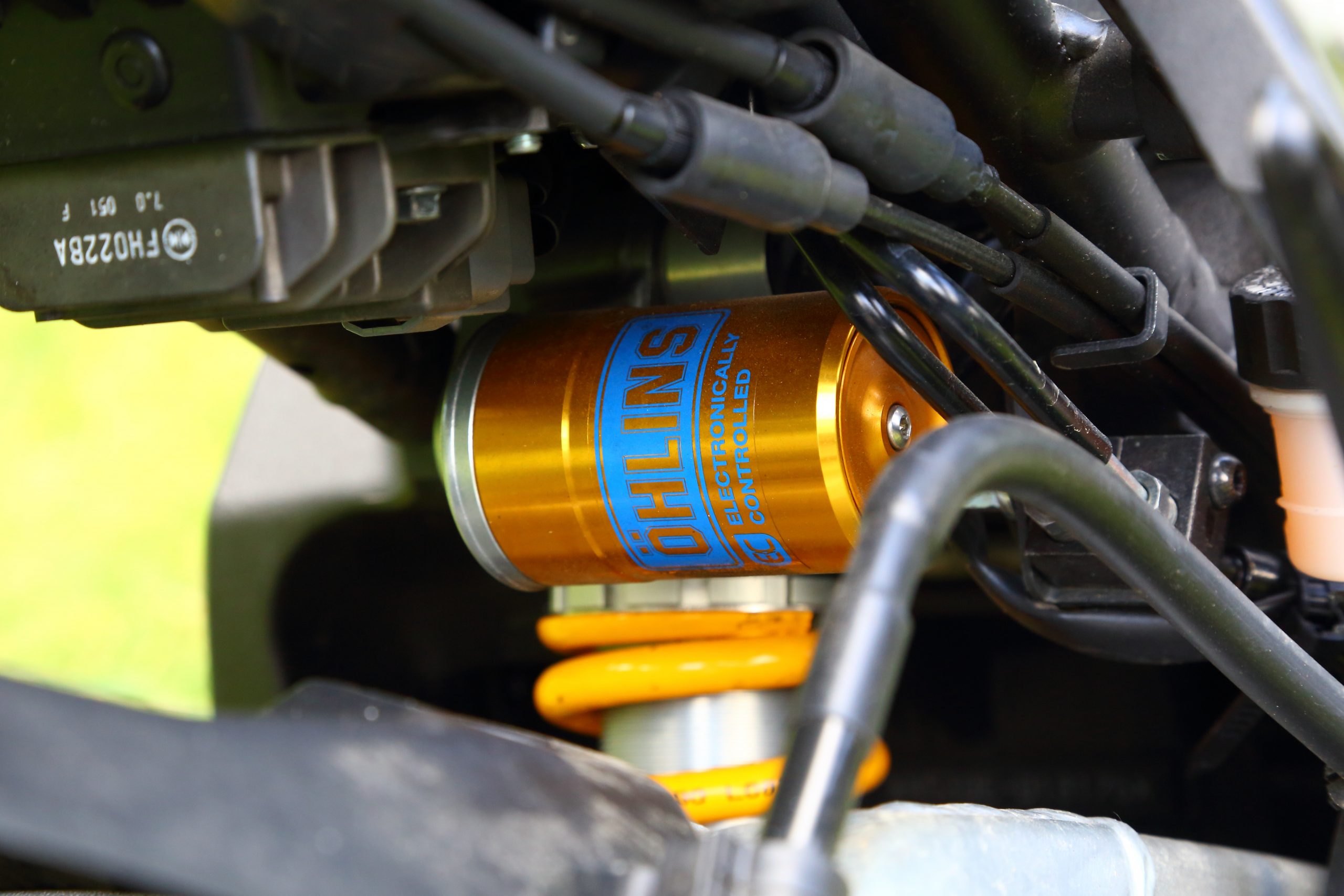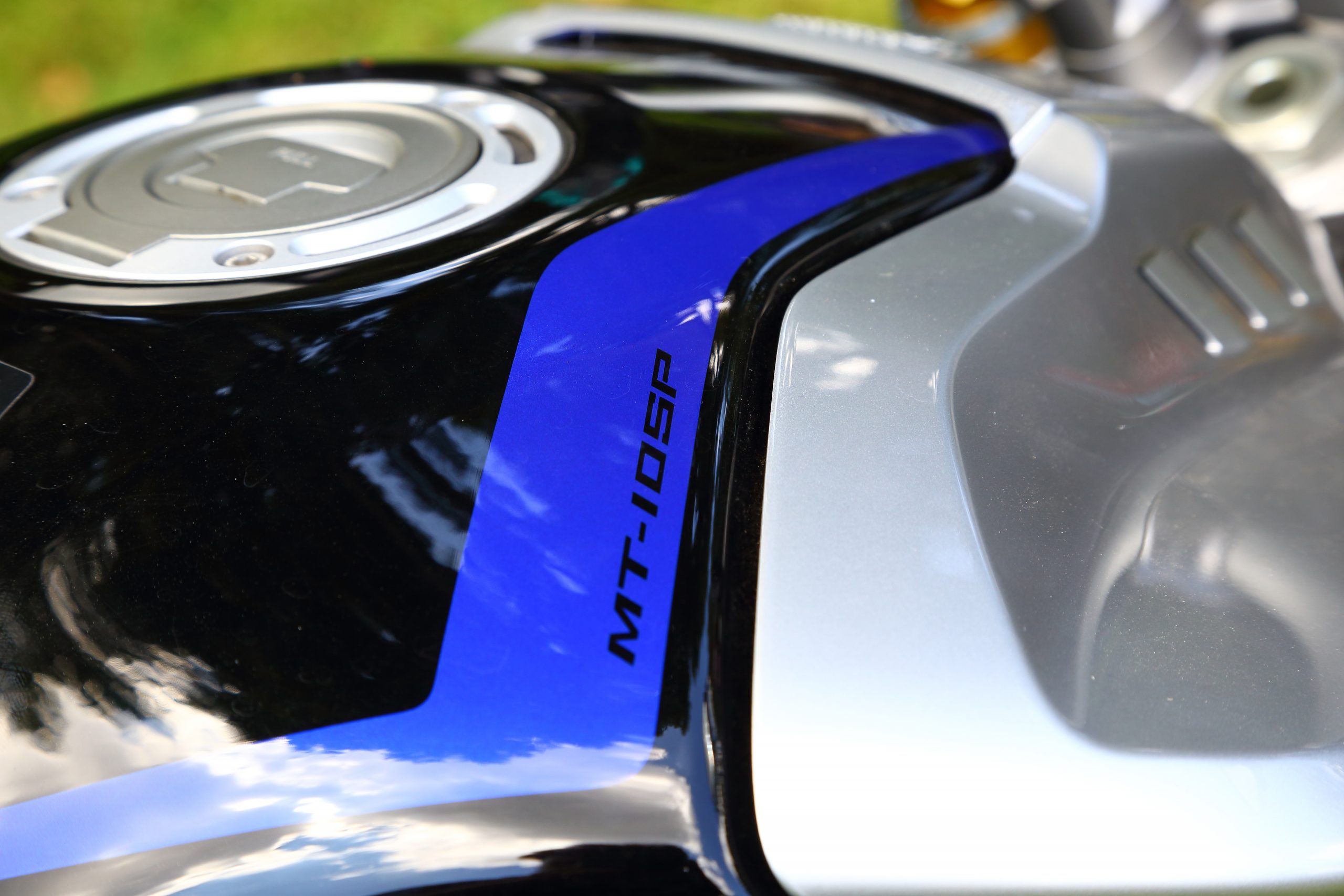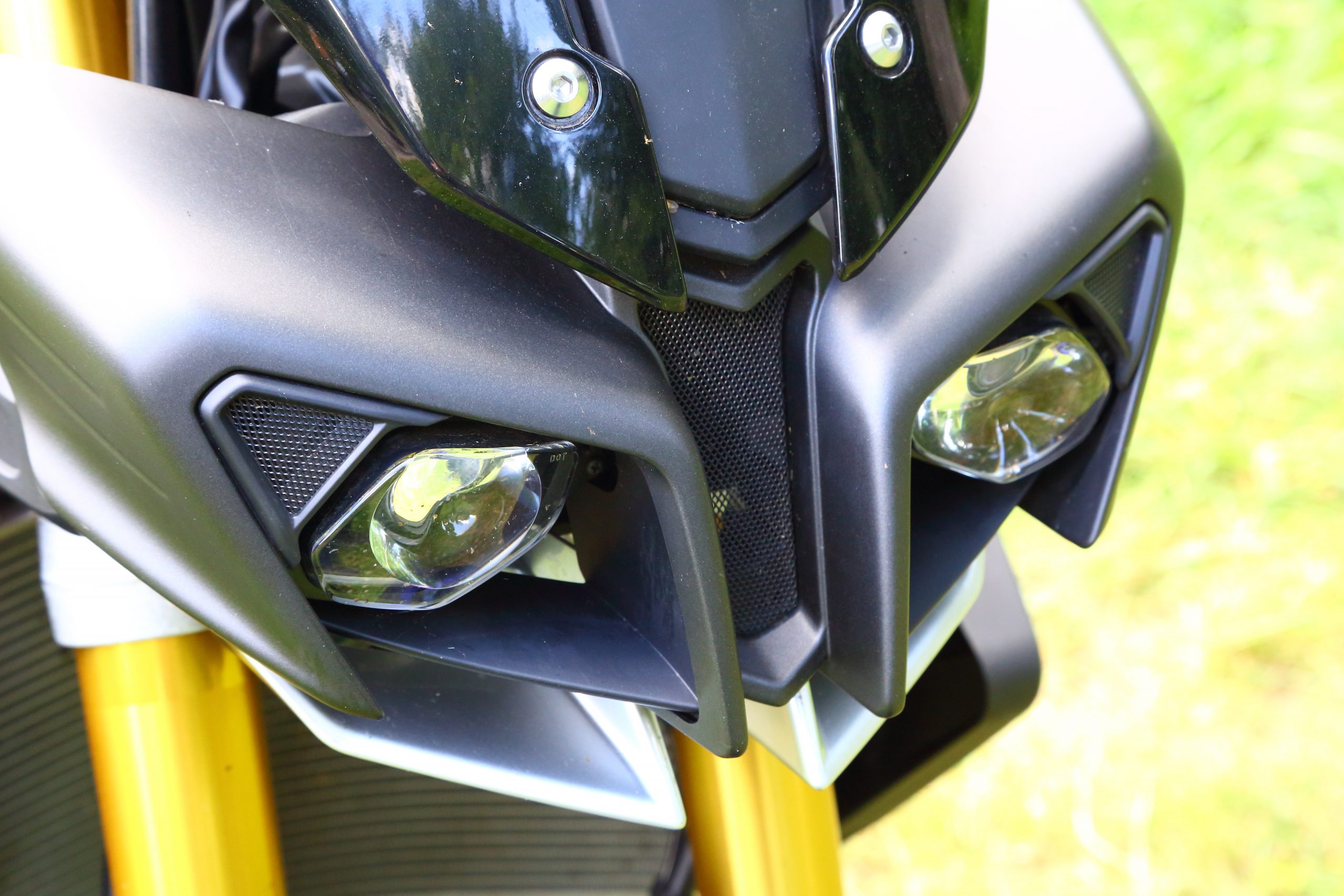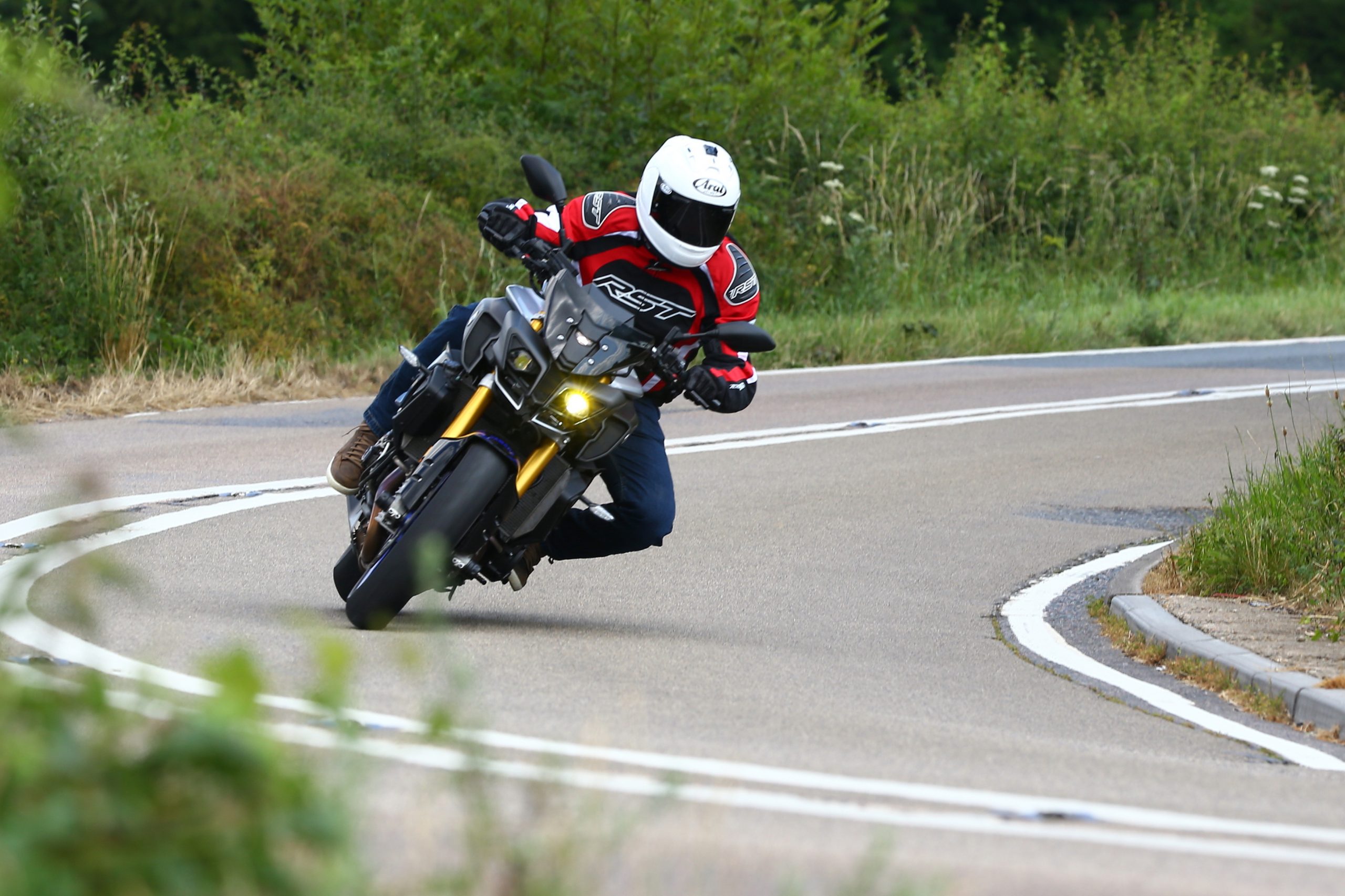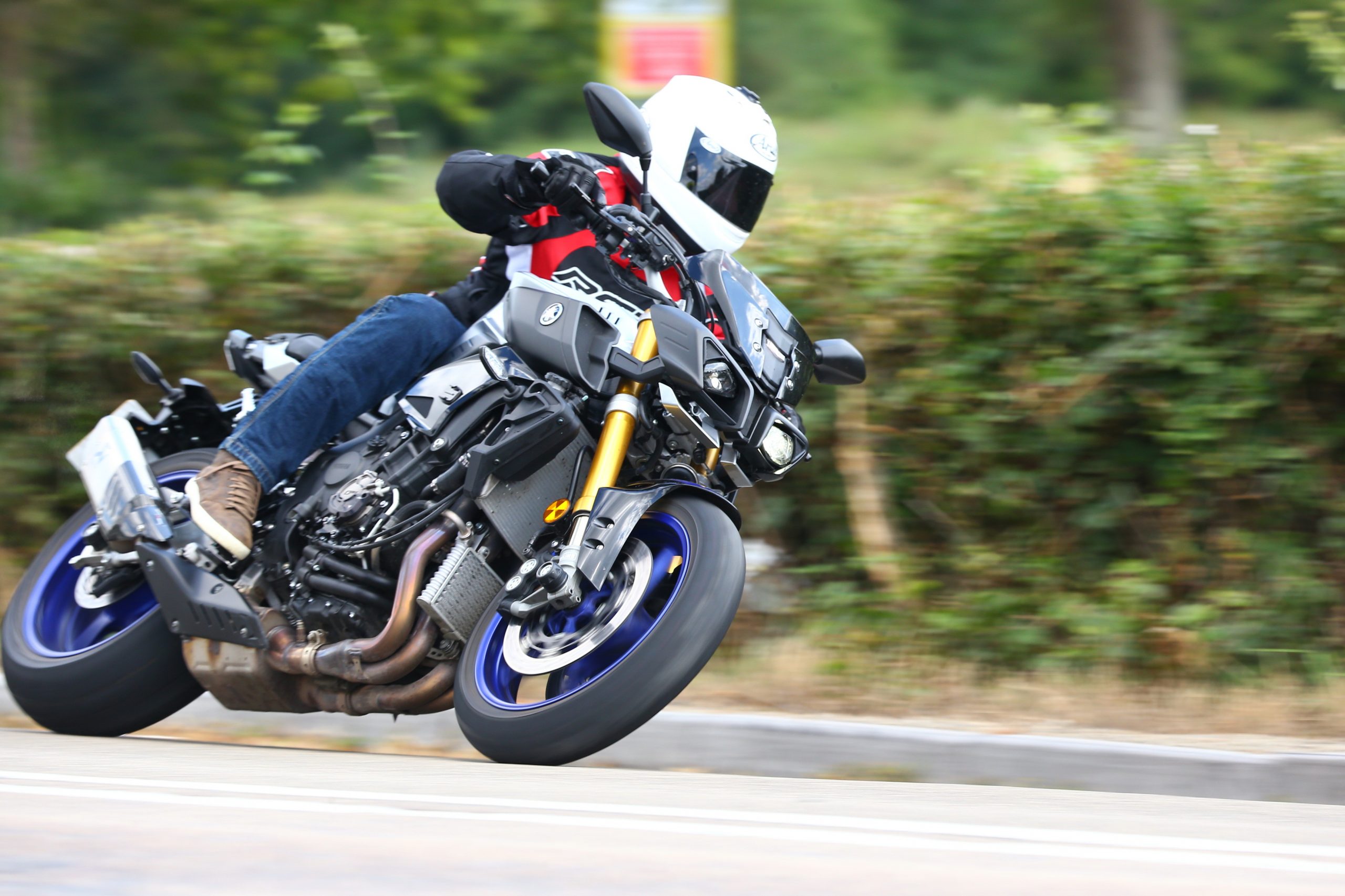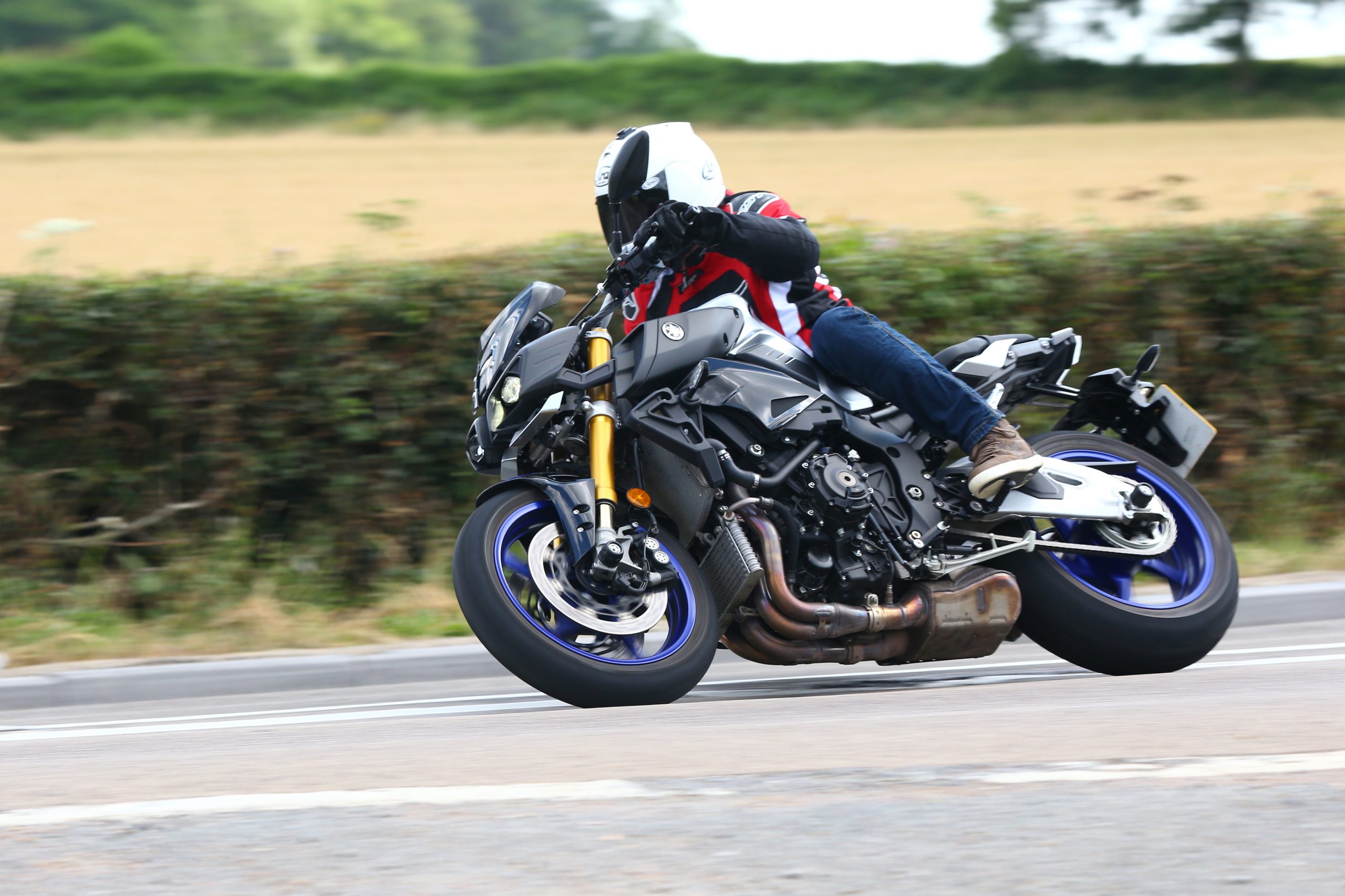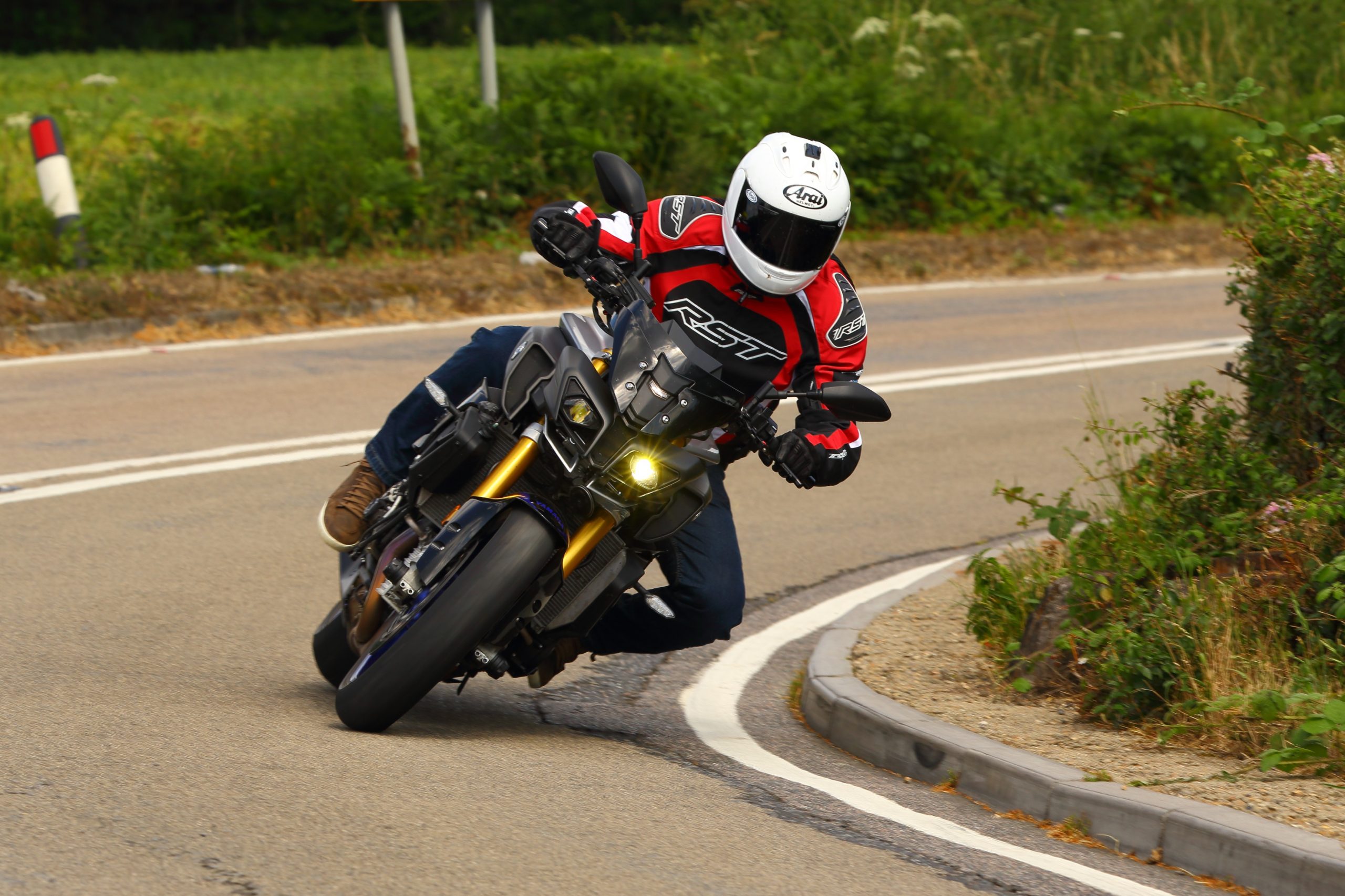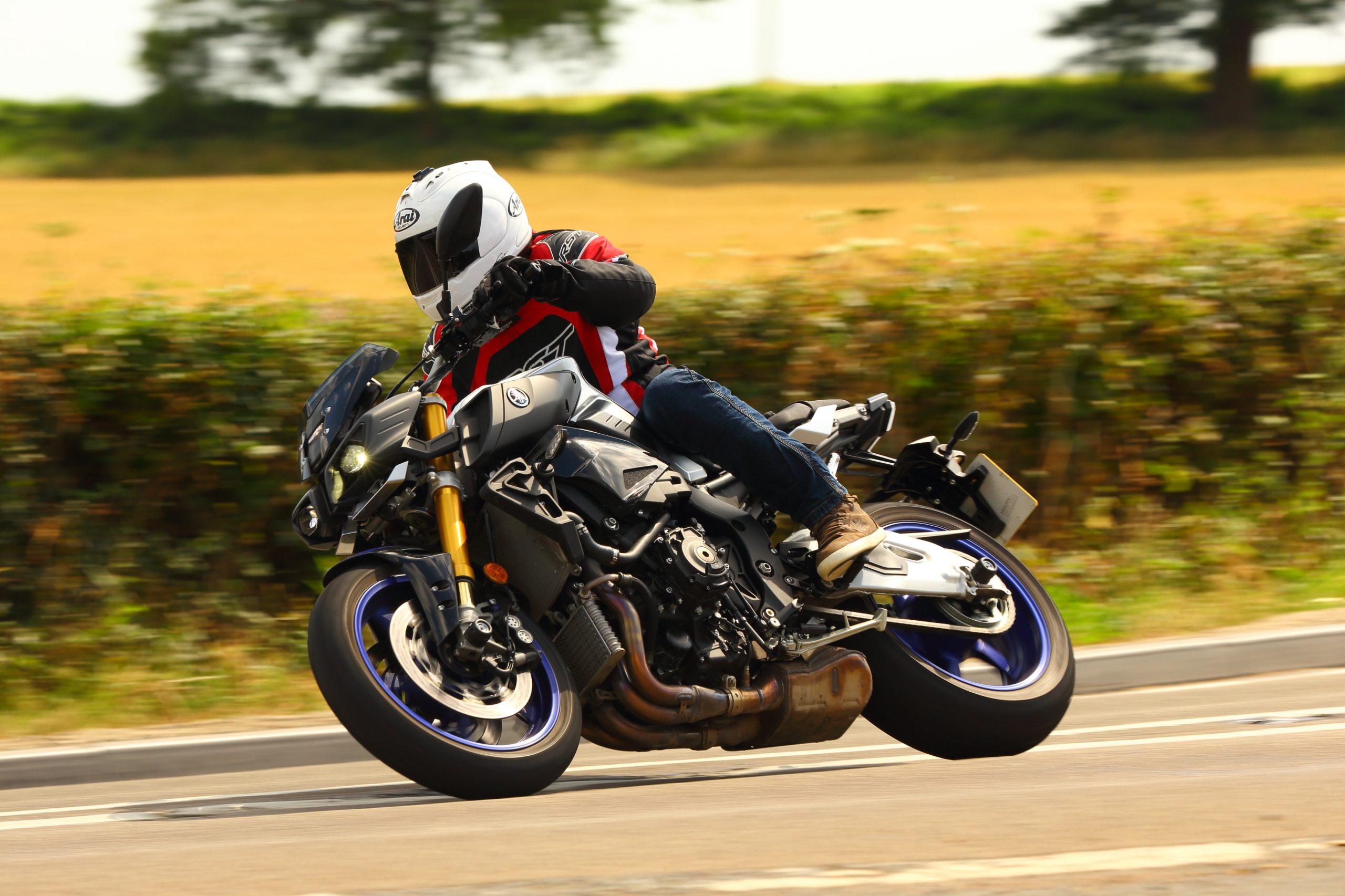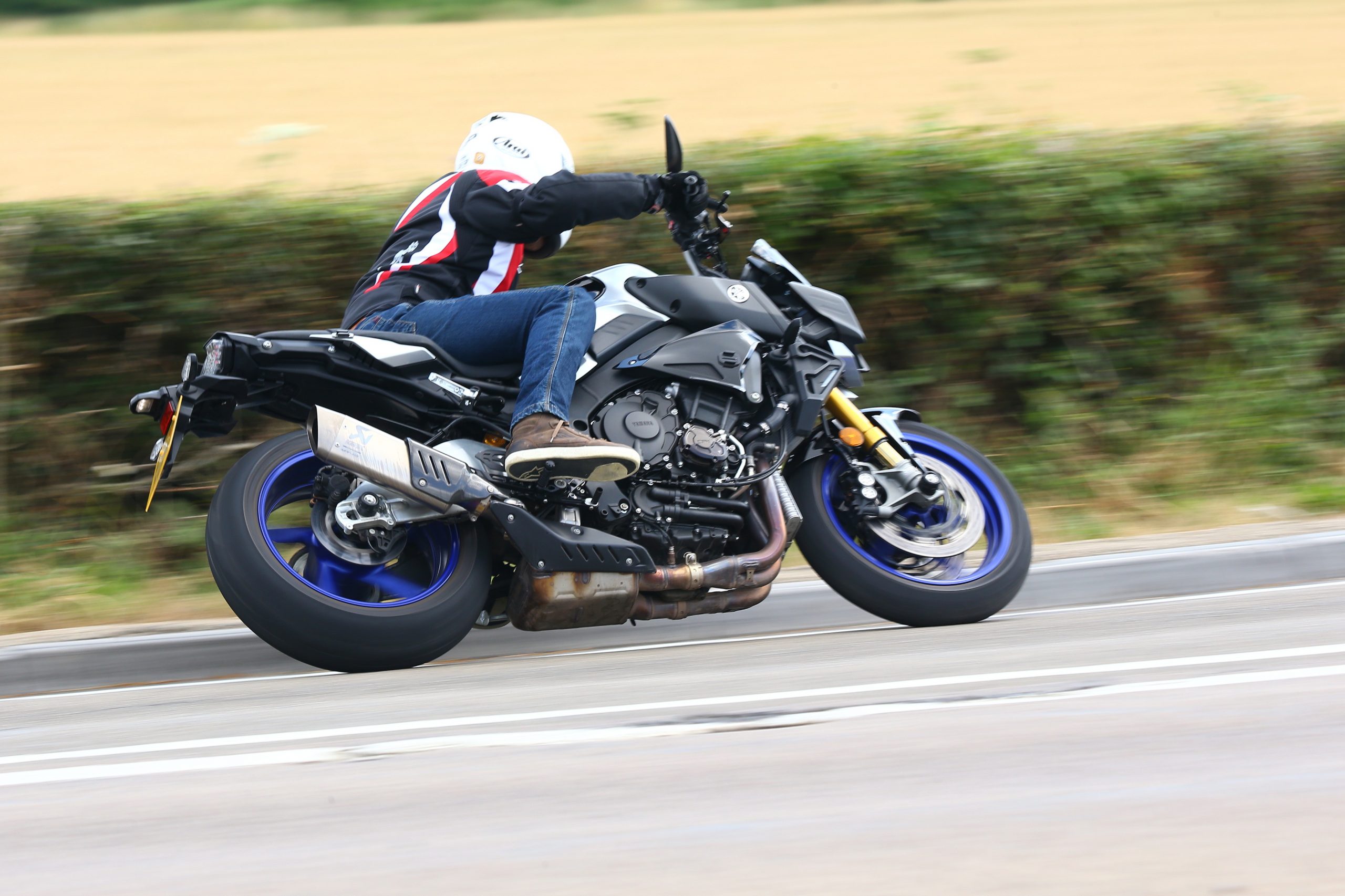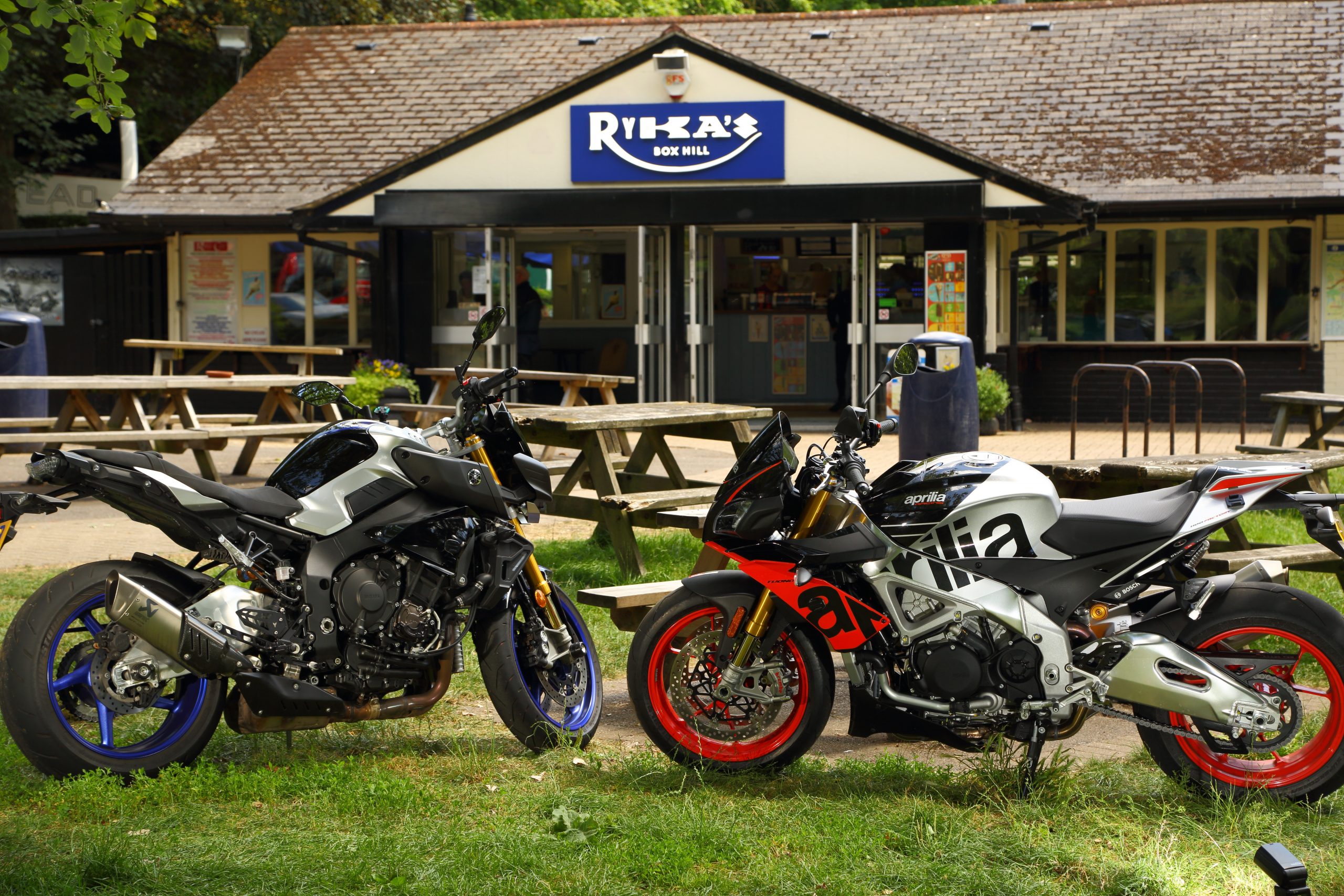I’m getting old. We’re all getting old. And as the years pass, my/our tastes are changing. When I was a lad, I was obsessed with sports bikes – FZR, RGV, CBR, ZX. All the big Japanese superbikes were the ones I flicked to in the pages of SuperBike, Performance Bikes and Fast Bikes each month. And all through the 1990s and 2000s, it was full fairings, low clip-ons and high pegs for me.
But as my back gets creakier and my knees clickier, I’ve tuned my preferences a bit. I like an upright riding position, and some wide bars, and maybe a slightly lower footpeg. But I still want all the tech and adrenaline of a proper performance machine.
Luckily I’m not alone – and we have some incredible bikes which aim to fill just this sector of the market: older, wealthier (this isn’t me sadly) bikers who grew up on superbikes and now want something different. So we have adventure bikes with 165bhp, and more computers than a 1990s Tandy, retro bikes with advanced electronic rider aids – plus hyper-naked bikes with more than 150bhp and technical gizmos straight out of WSB or MotoGP.
And we’ve got two of the best here for you on test. Yamaha added trick Öhlins electronically-controlled semi-active suspension to its crackers MT-10 a couple of years ago, to give the MT-10 SP. An R1-powered naked loonball with a top-spec list of electronics, high-end chassis kit and radical insectoid styling. Meanwhile, Aprilia’s been busy with its insane Tuono RSV4 1100 Factory for 2019, also bolting on the good stuff from Öhlins, to complement the 175bhp V-four superbike motor and RSV4-derived race-rep chassis.
Both these bikes were up at the top of the class already – but have the 2019 updates made the Tuono even better? We spent a week around London and the South East of England finding out…
Aprilia RSV4 Tuono 1100 Factory
Al’s thoughts…
“I was lucky enough to get an invite to the RSV4 1100 Factory launch at Mugello back in April this year – and I also got a run up the Goodwood Hill at the Festival of Speed earlier this month, again on an RSV4 1100. So I was well into the Noale superbike groove when I went to collect this Tuono – which really is exactly like an RSV4 without a fairing. The gruff roar from the end can, the extensive switchgear and comprehensive colour LCD dash were all familiar by now – but my memory was struggling to remember when I last rode an actual Tuono. Four years ago at Snetterton was my guess.
Luckily, there’s nothing too tricky about Aprilia’s high-end naked superbike – at first. Pottering through town on the way to the motorway home, the fuelling is spot-on, the riding position committed but not extreme, and the engine and chassis seemingly happen enough to waft you along while you check out the cruise control, traction control adjustment paddles, and work out how the slick little control joystick adjusts the menu settings.
Luckily, there’s nothing too tricky about Aprilia’s high-end naked superbike – at first. Pottering through town on the way to the motorway home, the fuelling is spot-on, the riding position committed but not extreme, and the engine and chassis seemingly happen enough to waft you along while you check out the cruise control, traction control adjustment paddles, and work out how the slick little control joystick adjusts the menu settings.
Once I hit some dual carriageway up to the M25 though, it all goes a bit wild. 175bhp is a lot of power, I don’t care who you are, and the Tuono puts it all down with gusto. The wheelie control is frantically modulating the torque to keep the front Pirelli vaguely in touch with the deck, and the ace quickshifter lets you fire in gear after gear. It’s heady stuff, and those involuntary giggles which a proper motorbike forces you to emit are never far away.
Luckily the RSV4-derived chassis is more than up to the motor – starting with the brakes. The Brembo Stylema calipers are the new top boss brakes in town, and they give proper brick-wall stopping power at the graze of a digit. Those Pirelli Super Corsa tyres grip the asphalt like kneeslider Velcro, and they’re another big tick mark in the Tuono’s book.
The suspension is why we’re here of course, and like the MT-10 SP, Öhlins’ finest electronically controlled forks, shock and steering damper all do an amazing job. It’s massively adjustable of course, with ‘A’ semi-active modes and ‘M’ manual modes, which lets you find your ultimate solution for road (where the A mode is aimed) and track (where the M modes are more suited).
As it came, in sport mode, the Tuono felt a bit firmer than the MT-10 SP’s base settings, but you could very easily tweak whatever you want from the setup. The Tuono has the later Smart EC 2.0 suspension system, which uses similar hardware, but more user-friendly software. In the ‘A’ active mode menus, you adjust real-world parameters rather than just numbers, so you ask for more support on brakes, better grip out of bends, or the like, rather than just twiddling values in a slider interface.
Yamaha will no doubt get this upgrade for the next update on its R1M and MT-10SP, but in the meantime, it’s another advantage for the Aprilia.”
Rob’s view…
“It wouldn’t take a cultural historian to work out which of this pair is the Italian. The Aprilia is bold and, unlike the MT-10 (that looks nothing like an R1 save for its chassis and engine), is very clearly an RSV4 with the fairing taken off and a set of straight of handlebars bolted on.
OK, so there’s a little more to it than that, and I’m sure the more technically-minded readers will be shaking their spanners in disgust, but in essence the Tuono is the epitome of the original streetfighter concept.
Which isn’t to say that’s a bad thing. The RSV4 is a handsome bike and while it’s hard to level the same compliment at the Tuono, it’s arguably the looker of the two, the sci-fi inspired MT-10 looking more Short Circuit, than well, erm, short circuit.
The V4 motor has evolved well over the years, the increase in power hardly a surprise as the capacity grew to 1100cc. But it’s definitely not a case of brute force and ignorance with the machine from Noale, no sir. Refinement is on almost Japanese levels with super-smooth fuelling from way down in the rev-range and a stonking top end that has just a little more character than the Yamaha can muster. The overrun is a real treat for your ears too, as the V4 motor does its best MotoGP bike impression, popping and banging its way into turns.
The chassis is without doubt the more track-focused of the two. While the suspension is ostensibly the same, there’s a tautness (and shortness) to the feel of the Aprilia’s chassis and, combined with those wide ‘bars, direction changes are lightning-fast — the Italian machine drops from knee to knee with aplomb. If you like track days then you’ll love the Tuono; I’d even go as far as to say that all but the most experienced riders and racers would actually be faster on a Tuono round tracks such as Cadwell Park and Oulton Park where swift direction changes and dealing with undulations are the key to a decent lap time. The Brembo brakes are also markedly better than the MT-10SP’s Advics calipers. The lever feel is exquisite with seldom the need for more than one finger to scrub off serious speedo numbers and the confidence to carry that last bit of brake into the turns — handy on the track, potentially life-saving on the road.
If you’re a solo-only kind of rider who enjoys scaring wildlife on the breakfast run then you might not be too concerned about the Tuono’s lack of practicalities. The pillion seat is a real perch so if you’re looking to discourage your nearest and dearest from spoiling the fun then it’s not a bad bet. But if you’re into sharing the fun and perhaps looking to bolt a bit of luggage on for a weekend away then you might struggle to find a place in your garage for the Tuono.
As for a place in your heart, well, that’s a little more tricky. Let’s just say the Tuono is the fun girlfriend that will likely get you into trouble, the MT-10SP the well-heeled wife with a sassy side…
Yamaha MT-10 SP
Al’s thoughts…
It’s funny how your impression of a bike can change over the course of a test. At first I had the Yamaha down as a bit of a gentleman’s express – cool, capable, smooth – maybe a little bit too calm. The unflappable Japanese businessman next to the manic passionate Italian artist in the other corner.
But the more I rode the MT-10 SP, the madder it got. It’s got a bit of a Jekyll and Hyde element to it – you can trundle about, short-shifting through the decent (though up-only) quickshifter, and it’s easy as you like. But once you start giving it more gas and aggression, it’s like you’ve flicked a switch, and the modest salaryman transforms into an ass-kicking samurai warrior…
A lot of that is down to the engine of course. The big-bang crossplane-crank lump is great in the R1 – but is perhaps even better here. The mountains of low-down and midrange grunt are totally outlandish, firing you out of corners like a comedy cannon, and hoiking the front wheel up at the most audacious times. Accompanied by a soundtrack seemingly modelled on a B52 ARCLIGHT strike, it’s got all the upsides of a big twin, yet the smoother running and higher revs of a four. Yamaha’s been working on this motor for a decade or more now, and the result here in 2019 is a supremely capable, mature, beguiling powerplant.
The chassis is every bit as capable, with a cherry on top in the shape of that fancy Öhlins suspension setup. The basic frame and swingarm design and geometry is shared with the R1, so the foundation is full-fat superbike spec. The wide alloy handlebars and revised riding position gives a different feel of course, and our test bike had some official Yamaha Gilles rearsets fitted, which give a degree of adjustability (though the solid gearchange gave us both sore toes).
Bridgestone S20 rubber is pretty good – though not the best in the sector, and a little bit on the older side now. Practice your burnouts and swap ‘em out for something new is our advice. The only other area for improvement on the chassis front is the brakes – the radial four-piston calipers are decent enough in isolation, but the Tuono’s Brembo Stylemas and 330mm discs are far better, with much more initial bite and power, and more subtle feel.
The MT-10’s Advics setup is a little long in the tooth now, and I’d like to see Yamaha move everything on again, the way it did in the 1990s when these calipers’ Sumitomo ancestors provide class-topping stopping for the Thunderace and Thundercat.
It’s that suspension which raises the MT-10 SP another notch in terms of chassis performance though. The ‘A’ semi-active modes come into their own on the dodgy Tarmac of SW London and Surrey, where you have to cope with speed humps, potholes, overbanding and all manner of shonky road surfaces. The plush Öhlins dampers perform proper magic-carpet miracles on the most rutted of asphalt, then stiffen up nicely when you wind the gas on and start attacking the bends. It’s common sense really – if you had normal suspension set soft enough to absorb the bumps, it would be a wallowing mess when you crank things up.
Here though, the Öhlins ECU knows what you’re up to, and can fiddle with the settings as you go along. Taking the MT-10 SP on track? Then the manual modes offer all the adjustment you could want, like a push-button electronic screwdriver operating on top-quality Öhlins forks and shocks.
Rob’s view…
The promise of a naked bike with a sportsbike engine was something I’d become cynical about. I mean, you only have to look back at Honda’s Fireblade-engined CB1000R or Yamaha’s R1-powered FZ-1 to understand my scepticism and disappointment.
But times change, and so, it would seem, has the attitudes of manufacturers when it comes to plonking its latest sports motor into an unfaired motorcycle with wide handlebars. No longer are we subjected to massively detuned motors with soft cams and mapping that errs towards sensible. Nope, now we’re getting (almost) what we wanted in the first place and it’s quite possibly thanks to another development in motorcycling that until very recently I wasn’t too keen on — rider aids and sophisticated engine management electronics.
Each of these bikes can have its character altered at the flick of a switch from barking mad licence-loser to friendly commuter. And with the addition of electronically adjustable suspension, from sharp-steering track tool to motorway cruiser. This versatility is what makes this new generation of hyper-naked bikes so very different from their flabby forebears, and in the case of the Yamaha MT-10SP, A real wolf in sheep’s clothing.
The R1 motor doesn’t have quite the same power as it does in its original guise (157bhp opposed to the R1’s colossal 197bhp) but a quick scan of the spec sheets show that the torque figures are remarkable similar (the R1 has just two newton metres more) and it’s this figure that means so much more on the road where 100% throttle for any length of time is never likely to end well. Unless you’re a fan of prison or hospital food, of course.
The crossplane crank motor develops that power from way low down making the MT-10SP super-useable on the road. Short shift if you’re in cruise mode or pin the throttle and keep feeding it gears with the quickshifter belching its way through the ratios as the front tyre struggles to remain on terra firma, even with the anti-wheelie enabled. It’s as flexible as a motorcycle of this kind could be, with a mode to suit your mood and a responsive power delivery that can be as keen as your wrist wants it to be.
Handling is also excellent. Within the many suspension modes, the bike’s character can morph from comfy cruiser to manic back lane scratcher. Whatever you choose, the bike feels balanced with just right the blend of stability and agility, the manual modes add a degree of personalisation but I found the preset modes pretty much spot-on. Maybe a bit of track time would have me fiddling, but the base settings are well sorted.
Versatility is where the Yamaha wins this test for me. Sure, the focused Aprilia is a fine-handling, super-fast machine. But unless you can have more than one machine in your garage (and let’s not forget the Aprilia is £2,700 more expensive than the Yamaha) then it has to be the MT-10SP.
It’s a bike you can ride to work, nail the Sunday breakfast run and take on a track day. It’s got a decent pillion seat and the facility to take luggage so you could even bang on a big screen and take it touring two-up with the better half. It manages to be a great all-rounder without being boring. And that takes some doing. Just ask Honda…
THE WINNER IS?
For £14-17k, you’d expect to be getting a very good bike – and that is indeed the case. Both these bikes are crackers, with piles of power, tonnes of tech and a surfeit of style. If you’re looking for an utterly modern hyper-naked, based around a proper superbike chassis and engine, either will do a stonking job, whether it’s for occasional trackdays, classy commuting, Sunday blasts with sportsbike-riding pals, or even the odd longer jaunt.
There are definite differences though. The Yamaha is the more sensible option, with a slightly less mental engine and chassis, better pillion accommodation with the possibility of luggage fitments and even dull stuff like a wider dealer network. It’s also cheaper, and possibly less likely to get you bike-jacked if you ride it through London (not by much though – the TMAX massive would love an MT-10 of any spec…) There are downsides – mostly the vanilla brakes and old-spec OE Bridgestone tyres – but the final clincher is that price – £2,700 less than the Tuono.
If you’re keen on the Italian option though, we’d not dissuade you. It’s pricier of course, but you get a fair bit for that cash. Brembo Stylema calipers work much better than the Yam’s stoppers, and look superb. The stock Pirelli rubber is also a notch up. There’s also that indefinable exotic touch from sporting a limited-numbers, Italian-built machine, which you’re not going to see parked up at Box Hill or Ponderosa Cafe anywhere near as often.
In the end though, Rob and I would both plump for the MT-10 SP. The extra cash you save over the Noale masterpiece would pay for a fair bit of braking and tyre upgrades, plus a cheap dirt bike or a heap of trackday fun.
But every time we saw an RSV4 Tuono 1100 go past, we’d definitely have the odd pang of regret…
SPECS
Aprilia RSV4 Tuono 1100 Factory
Price: £16,999
Engine: DOHC 16v 65° V-four, l/c, 1,077cc
Bore x stroke: 81×52.3mm
Compression ratio: NA
Carburation: ride-by-wire Marelli fuel injection, 48mm throttle body
Max power (claimed) 175hp@11,000rpm
Max torque (claimed) 89ft lb@9,000rpm
Transmission: six-speed cassette gearbox, wet slipper clutch, chain final drive
Frame: aluminium twin spar
Front suspension: 43mm USD Öhlins fork, NIX SmartEC 2.0 electronically-adjustable, Öhlins Smart EC 2.0 steering damper
Rear suspension: aluminium swingarm, Öhlins TTX monoshock, SmartEC 2.0 electronically adjustable
Brakes: Dual 330mm discs, four-piston Brembo Stylema radial calipers (front), 220mm disc, dual-piston caliper (rear), Bosch 9.1 ABS.
Wheels/tyres: cast aluminium/Pirelli Super Corsa SP, 120/70 17 front, 200/55 17 rear
Rake/trail: 27°/99.7mm
Wheelbase: 1,450mm
Kerb weight: 209kg (fully fuelled)
Fuel capacity: 18.5 litres
Equipment: APRC Aprilia Performance Ride Control with IMU, cornering ABS, traction control, launch control, pitlane speed limiter, up/down quickshifter, wheelie control, colour dash, electronic semi-active suspension, cruise control, Bluetooth connectivity.
Yamaha MT-10 SP
Price: from £14,299
Engine: DOHC 16v, in-line four-cylinder with crossplane crankshaft, l/c, 998cc
Bore x stroke: 79 x 50.9mm
Carburation: Electronic fuel injection
Max power (claimed) 158.2hp @11,500rpm
Max torque (claimed) 111nm @ 9,000rpm
Transmission: six-speed gearbox, hydraulic wet slipper clutch, chain drive
Frame: Aluminium twin-spar
Front suspension: 43mm Öhlins USD fork, electronic adjustment (ERS)
Rear suspension: aluminium swingarm, Öhlins monoshock, electronic adjustment (ERS)
Brakes: twin 320mm discs, four-piston radially-mounted Sumitomo calipers (front), 220mm disc, twin-piston caliper (rear), ABS.
Wheels/tyres: Die-cast alloy, Bridgestone S20, 120/70 17 front, 190/55 17 rear
Rake: 24°
Trail: 102mm
Wheelbase: 1,400mm
Wet weight (including oil and full tank of fuel): 210kg
Fuel capacity: 17 litres
Equipment: IMU, cornering ABS, traction control, up-only quickshifter, colour dash, electronic semi-active suspension, cruise control.

